




All our topics are chosen by our readers, through meetings, feedback or chats in the street. Integration is a subject that has come up again and again. The term is imperfect, but that’s what has made for such a rich and varied array of articles all written by members of our community. I hope you enjoy it and, as ever, would love to hear your thoughts.
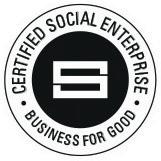


There’s lots going on with the magazine at the moment. We’ve just launched Mind the Health Gap – a year long collaboration with The Ferret, examining the solutions to health inequalities that affect people in our community.

We’ve also just taken on the lease of our first premises! While it is currently a bit of an empty shell, by the time this magazine is back from the printers, the sign should be painted, the wifi installed and the furniture delivered.
This feels like quite a momentous time in the Greater Govanhill story. And it would not have been possible without the support of our readers, who got behind the project from the very beginning. Way over a hundred volunteers have helped in one way or another – writing stories, taking photos, proofreading articles and delivering the magazine. So, I just wanted to say a big thank you to everyone who has been part of the journey so far.
The Community Newsroom, at 82 Bowman St, feels bristling with potential to find new ways to share the stories that matter to you. So do pop in and say hello!
team
is a culture animator, community development worker, language teacher and trainer in effective communication when there is a language barrier. She likes bringing people together through languages, poetry, traditional craft, song and dance.
Find out how Mana celebrates diversity on page 26

has worked for Greater Govanhill as Editorial and Communications Assistant for a whole year now! He is interested in writing more about queer Glasgow and ecology.
Read Jack’s round up or the best lunch spots on page 14

is a comic artist and a ‘Bean Feasa’ teller of the wise stories. Currently she is in West Cork, but has lived in Donegal and Glasgow. When she is not creating comics and telling stories, she enjoys cycling and making soup.

Enjoy Rae’s comic strip on Little Donegal on page 34
Kate Benzie, Rachael Proctor, Rae McKinlay, Tarneem Al Mousawi Translations by Alicja Tokarska, Romano Lav, Povestry Printed by Gladstone Media Ltd
Yours sincerely, Rhiannon J Davies and the Greater Govanhill




The Glasgow City Council has announced that 30 of its community-based venues will open during the winter months as ‘Welcome Places’. This is part of the council’s package of support to counter the negative effects of the cost of living and energy crisis.
Councillor Ruairi Kelly, City Convener of Neighbourhood Services and Assets said: “With Welcome Places we want to offer alternative solutions and a place for people to feel secure, warm, with company, and with a friendly face available to help as well as the chance to find out about other support being delivered, in some cases, by the third sector in our city.”
Other Southside ‘welcome centres’ include: Finn’s Place (in Battlefield), Pollokshaws Library, and Castlemilk Community Centre. The venues have apparently been identified as being as close as possible to transport links, and those that can offer ‘business as usual’ in local neighbourhoods
The council website states: ‘In some venues there will be the opportunity to engage in services and take part in activities in a warm place within normal operating hours… Designated Welcome Places will also include welfare and refreshments, and the use of Wi-Fi and PCs in libraries, and will offer a welcoming sanctuary and heated spot for residents to spend some time in and save money.’
At the time of going to print, neither the GCC helpline or the Govanhill Neighbourhood Centre staff were able to provide any further information of what form Govanhill’s welcome centre will take.
Over the past few months, members of the RMT (Union of Rail, Maritime and Transport Workers), the CWU (Communications Workers Union) and others have been striking over pay disputes and working conditions, most notably affecting the rail and postal networks.
The postal strikes are currently pencilled in to continue in the run-up to Christmas, with the RMT striking across several days in November.
You may have seen Southside Strike Solidarity out supporting CWU workers at the Victoria Road postal depot picket line in recent weeks. They are encouraging others to do the same. Besides joining a picket line, there are also other ways you can support union members during industrial action:
• Write to your local MP/MSP – demand that local politicians are fighting for fair pay and better working conditions on behalf of their constituents
• Put a sign on your door saying you don’t want post delivered and don’t get the train when there is a strike on – due to recent changes in law enforced by the UK government, it is now easier for companies to hire temporary staff so that the effect of the strikes won’t be felt as widely. Posters for your door can be found on the CWU website
• Join Glasgow Southside Solidarity – a network of people and organisations where you can get the latest information about strikes and industrial action
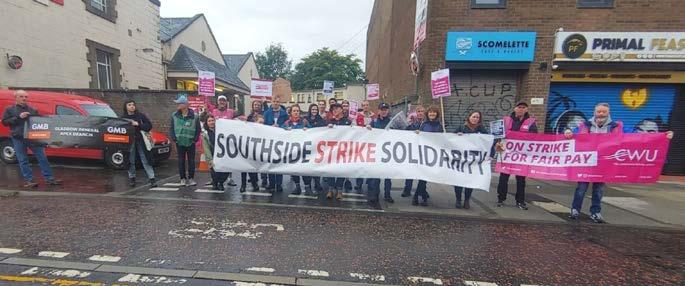
For more info, follow: glasgow_southside_solidarity on Instagram.
Govanhill has been shortlisted in the ‘best neighbourhood’ category by the Academy of Urbanism in their annual awards. The nonprofit organisation seeks to “work with places to identify and reinforce their strengths, and help them recognise and overcome obstacles to greater success”.
Govanhill has been nominated alongside Ballynafeigh in Belfast and Marmalade Lane in Cambridge. Academic and young urbanists are currently visiting all the shortlisted areas before deciding which will come out on top.
On 6 September, Nicola Sturgeon announced a temporary rent freeze for public and private properties, as well as a ban on evictions, through this winter and the cost of living crisis which the First Minister deems a “humanitarian emergency”. The rent freeze was legally enacted on the same day as the announcement, and will officially end in March 2023, although they have the powers to extend it.
Living Rent has reported hearing that a number of Govanhill tenants were served rent increase notices of 15 percent just a couple of days before the freeze. These increases will hit tenants in the run-up to Christmas at a time when heating bills will be their highest. They are working to take action on this matter. If you had your rent increased just before the rent freeze or if you have any other tenancy issues, contact Living Rent to see what support they can provide.
Send an email to hello@greatergovanhill.com and check www.greatergovanhill.com for all the latest news
A clinic run by the Scottish Child Law Centre has opened for a six week pilot (ending 6 December) and is based in Samaritan House on Coplaw Street. They will provide in-person legal advice one day a week with a specific focus on children from black and ethnic minority backgrounds.
After working with local racial equality organisations, the aim of the centre is to ensure that children’s rights legal advice reaches more families from diverse backgrounds. It will receive referrals from partnership organisations including Govanhill Law Centre, The Space and Govanhill Community Development Trust. After the initial pilot, the SCLC hopes to use its success to advocate for a long-term community clinic specialising in child law in the area.
Following outreach with local charities and local services, some of the main areas the clinic expects to advise on are; children’s rights following separation or divorce; children facing the hearing system; children being in trouble with the law; children’s rights during an identity or mental health crisis; the rights of refugee and migrant children.
Sarah Forster, director at the Scottish Child Law Centre, said: “Within the cost-of-living crisis an increasing number of families are unable to find the money to instruct a solicitor for initial legal advice on the issues they face. This means in more Scottish households, for example where a child might be facing the children’s hearing system, their rights are placed in competition with household bills, heating and eating.
“Our new community-based clinic in Glasgow aims to alleviate some of these challenges by providing free legal advice, and a chance to be on the ground in communities where we know issues of poverty and discrimination persistently impact the lives of children.
For more, call 03003301421 or email advice@sclc@org.uk
The neo-gothic church on Daisy Street has been put on the market by the Church of Scotland for £149,995. Many locals were dismayed that it was put up to be bought by the highest bidder rather than being passed into community use.
Govanhill Trinity Church was built between 1878 and 1880 in a Neo-Gothic style and designed by the architect Robert Baldie. It has changed names and brought together different congregations several times over the years.
The building was a functioning part of the community right up until 2015 when it closed its doors for the last time following the unification of two local congregations.
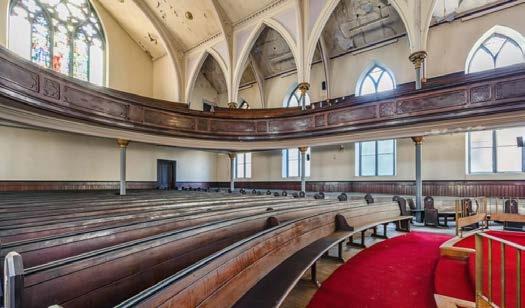
In 2020, a community consultation asked local residents to share ideas for the how best to utilise the building for community use. Ideas put forward included using the space to celebrate different rituals and cultures, to support local crafts, to be a space for health and wellbeing workshops, to hold cooking classes or run a community cafe. While there are a number of community spaces in the area used by community groups there is a lack of anything of this size.
The closing date was set at 31 October.
Campaigners have called for the planned redevelopment of Shawlands Arcade not to go ahead as planned. The proposed plans would see 600 new luxury flats be built between Kilmarnock Road and Pollokshaws Road with no provision at all for social or affordable housing.
Living Rent Glasgow encouraged locals to strongly object to the proposals on the grounds they will:
• Adversely impact the provision of high quality, affordable housing and not improve access to housing across all tenures nor raise private rented sector standards
• Not minimise the impact of on-street parking or support car parking at basement level
• Not respect the historic and natural environment
• Failure to provide a transparent and meaningful engagement with the community over preserving some of the community spaces
• Disadvantage vulnerable persons categorised under the Protected Characteristics of Disability
• Not be served by local infrastructure as there are no proposals for corresponding increase in health facilities
Ten Action Grants worth £2500 and ten Kickstart Grants worth £1000 have been distributed to a broad array of projects supporting local people’s health and wellbeing, including ‘sound baths’, community gardening, cycling, music projects, arts activities, youth activity and support for Women’s groups.
Greater Govanhill was delighted to receive £1000 to work with an educator to develop English language learning resources to accompany previous issues of the magazine and shared with ESOL classes and schools in the area.
The awards were distributed through a process of ‘participatory budgeting’ in which over 400 local residents cast their votes for their favourite projects. There are plans for a further Thriving Govanhill Fund. Follow the page on Facebook for updates.
The recipe for this issue of the magazine is taken from the Govanhill Food Stories Community Market Zine. The zine was produced at the G42 Pop Ups community market held in August as part of Govanhill International Festival and Carnival and Scotland’s Year of the Stories 2022. Govanhill residents shared stories, drawings, favourite dishes and their favourite recipes at the popup exhibition. The zine was collated by Glasgow Zine Library and editor Polly Rappaport.
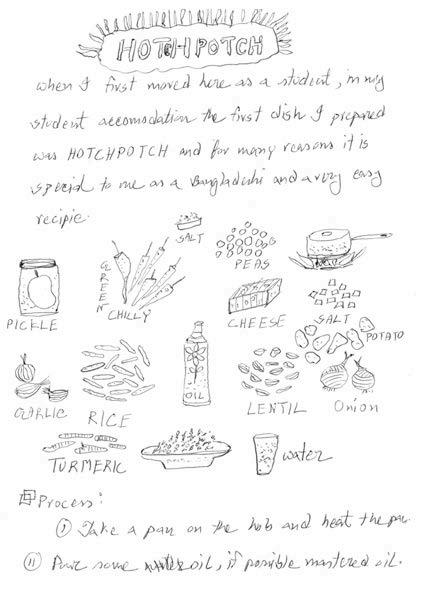
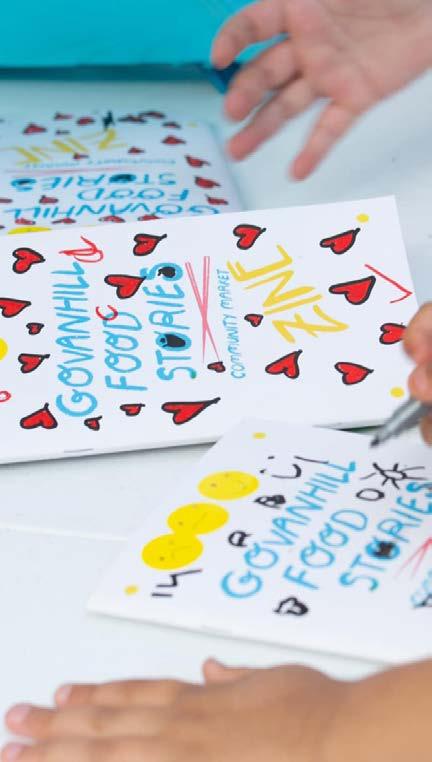
Got a recipe to share? Get in touch: hello@greatergovanhill.com
Hotchpotch is the kind of food that is associated with the rainy season in Bangladesh. In local culture people often think of having hotchpotch with an omelette when it rains. It is delicious and good for you too. My mum used to cook it as a special breakfast, but as soon as I started living alone, I was cooking it for lunch and dinner as well.
When I first came to the UK, I had to stay in a hotel for two weeks in quarantine. Afterwards, when I moved to student accommodation, my first day there was very special for obvious reasons. I was excited and anxious. My flatmates took me to the nearest superstore but I had only one pan to cook in, so I thought of cooking hotch potch that evening. This was my first cooked meal in the UK thousands of miles away from my home. It’s easy to prepare, full of different flavours and vibrant in colour.
Now I am very passionate about cooking, but previously I was not really interested in learning recipes. After graduation I was living alone, and this was the first recipe that I learned properly. I offered it to many of my friends from the Bangaldesh queer community when they were visiting me. They appreciated it, and each time I think of preparing it, I have a flashback of those memories.
Ingredients
Cooking oil
1 x onion - chopped
2 x clove garlic - diced Salt - to taste
1 x tsp turmeric 1 x cup peas
Method
3 x potatoes - chopped 1 x tbsp mango pickle (optional) 1 x bay leaf (optional)
2-3 green chilli - finally chopped 1 x cup rice and lentils mixed 2 x cups water
1. Heat a little oil in a large pan on a medium heat.
2. Place onion in the hot oil and cook until golden brown.
3. Add some garlic, a little turmeric powder and salt and cook for a couple of minutes while stirring.
4. Add potatoes and peas (you can other chopped vegetables if you prefer).
5. For flavour, you can add a bay leaf or mango pickle if you like.
6. Add green chilli according to your taste.
7. In a separate pan, fry the lentils and rice in a little oil.
8. Add them to the vegetable mixture and stir.
9. Pour in approximate 2 cups of water and mix.
10. Cover with a lid and wait for around 20 minutes – or until the rice and lentils are cooked properly. Taste and adjust seasoning.
11. Serve and enjoy!
Sadia and Asia met volunteering at Kin Kitchen, a collaborative, volunteer-run vegetarian and vegan community food project which focuses on sustainability, social inclusion, food poverty and education. They instantly got on, sharing their passion for food and the stresses of their day jobs working in the NHS. Together they’ve worked on delivering community meals and cooking classes.

I’m half Italian and I’ve also got Turkish heritage, so food has always been very important in my family. I lived in Rome until I was seven and have been very privileged to grow up in this incredible food environment with fresh Mediterranean meals.
I moved to Glasgow when I was 18 for uni and have been here ever since. I did a master’s in public health last year, which brought me into my current job trying to improve the mental wellbeing of NHS staff. In the future, I want to align my passion of tackling food poverty with my public health career.
Kin Kitchen did a community meal in Govanhill and it genuinely brought me so much joy to be putting delicious, healthy, locally-sourced food onto everybody’s plates, and see people really enjoying it, especially as local residents had also brought dishes from their home countries to share. I also love the educational side of things – teaching people how to cook nutritious meals and adapt recipes with more affordable ingredients. I feel like food education is something really missing from the school system.
There’s a big creative side to being a volunteer. We have a monthly meeting to discuss ideas for community events, outreach and fundraising, and everyone’s contributions are really valued. All the volunteers are amazing, passionate people from different walks of life. It’s been incredibly educational and has let me get to know Glasgow a bit more too. I see bright things in Kin Kitchen’s future.
To find out more, follow Kin Kitchen on Instagram @kin_kitchen_gla and support their fundraiser by scanning this code:

Food is a massive part of my culture. Growing up in an extended family, every Sunday we would all take turns cooking and that’s where my passion for healthy and nutritious food developed. Even as a child, I would try to cook chapatis or fill samosas with my mum and this passion grew stronger over time. I remember my grandma attending an older lady’s friendship group. When I got a little bit older, I started volunteering as a food co-ordinator there. I saw how the food integrated the community and how it had a positive effect on the group’s mental health.
Working for the NHS in a clinical environment, I help improve mental and physical wellbeing. There is a very strong evidence base of how curative and therapeutic groups can be. Kin Kitchen combines the two aspects of good nutrition and using food as a tool for social impact,
particularly in the block of community cooking classes, as well as a community meal where we saw different cultures come together and share their favourite dishes.
Being a volunteer for Kin kitchen allows me to make a difference within the community, there is a strong focus on lessening the gap of food poverty between the community and to encourage sustainable food practices. In the future, I’d love to see Kin Kitchen rolling out and working with more vulnerable groups as a therapeutic intervention. Food can bring people together in a plethora of ways –cooking together, eating together, and the educational part of learning about healthy accessible recipes. In an age where mental health disorders are on the rise, good nutrition is not only good for your physical health but it also contributes towards good mental health, contributing towards a more wholesome life.
As told to Rhiannon J Davies Photo by Hannah WrightThis quote comes from Raymond Gurême, a French-Roma man who died in 2020 at the age of 94. He survived and escaped nine concentration camps during the Holocaust. I am inspired by him as he speaks about being proud and standing strong.
When I first came to the UK in 2012, I arrived in Glasgow with my whole family ready to build a better life. I was only 13 at the time, but I already knew leaving our previous country was the best option as life there was hard. My parents had eight kids, a small house and an income of roughly £200 a month to pay bills and buy food.
We stayed with relatives for the first couple of weeks until we managed to find a flat. My dad went to ask for help and was able to get a job with the support of a few local organisations.
I got into a school where I was helped to improve my English by the compassionate and kind Scottish teachers. I feel like Scotland has a different view about others coming in and actually tries to help people and improve their life situation.
Seeing local organisations reaching out to help, made me and my family feel like we were not alone in our situation. Scotland feels like a very compassionate and welcoming country. At the end of my education, I was able to communicate well in English, and felt a connection with my school friends and teachers.
Even though I had become part of this community, I still missed my hometown and sometimes felt I was surrounded by strangers. Not everyone understood our cultural differences and sometimes there were racist attacks in our area. But after a few years, everything settled and it was a much safer and happier place. My experience coming to Scotland was not an easy one, but I’m glad I was able to meet all kinds of amazing people on my path.
Life has come to the point where I now have a family, with a wife. Our three lovely kids were born in Scotland and I feel they will be treated equally as Scots. As for myself, I want to help people in our area integrate and feel part of this community. But this also involves reminding people to be proud to be Roma and to never hide who you are.
Even though I have been in Glasgow for ten years and I have integrated, it feels like my culture and traditions are still a part of me. I still eat the same traditional food and continue with the same cultural behaviour and respect for others. I think it is very important to be able to move to a different place and still keep your tradition and culture alive whilst living and learning about new cultures.
Tento citát byl inspirován Raymondem Guremem, francouzským Romem, který zemřel ve věku 94 let v roce 2020. Během holocaustu přežil a utekl z 9 koncentračních táborů. Jsem jím inspirován, když mluví o tom, že je hrdý a stojí pevně.
CZECHKdyž jsem poprvé přijel do Spojeného království v roce 2012, přijel jsem do Glasgow s celou svou rodinou za lepším životem. V té době mi bylo pouhých 13, ale už jsem věděl, že opustit naši zemi je pro nás tou nejlepší volbou. Život nebyl jednoduchý – moji rodiče měli 8 dětí, malý dům a příjem zhruba 200 liber měsíčně, museli platit účty a jídlo.
Když jsem přijel do Glasgow, museli jsme u některých příbuzných zůstat 2 týdny a nakonec se nám podařilo získat byt, táta šel požádat o pomoc a nakonec se mu podařilo získat práci s pomocí několika místních organizací.
Podařilo se mi dostat se do školy, kde mi pomohli zlepšit angličtinu soucitní a laskaví skotští učitelé, mám pocit, že Skotsko má jiný pohled na ostatní, kteří přicházejí a snaží se pomáhat lidem a zlepšovat jejich životní situaci.
Když jsem viděl, jak místní organizace oslovují pomoc, ve mně a mé rodině jsem měl pocit, že v naší situaci nejsme sami a že Skotsko je velmi soucitná a vstřícná země.
Na konci svého vzdělání jsem byl schopen dobře komunikovat v angličtině a cítil jsem spojení s přáteli a učiteli ze školy.
I když jsem se cítil být součástí komunity, stále mi chybělo rodné město a setkání s přáteli a rodinou, protože jsem byl stále obklopen cizími lidmi a ne všichni chápali kulturní rozdíly a někdy v naší oblasti docházelo k rasistickým útokům.
Nakonec se po několika letech vše urovnalo a naše oblast byla mnohem bezpečnějším a šťastnějším místem. Moje zkušenost s příchodem do Skotska nebyla jednoduchá, ale jsem rád, že jsem na své cestě mohl potkat všechny druhy úžasných lidí.
Život dospěl do bodu, kdy se cítím integrován a mám rodinu se svou ženou a mými 3 krásnými dětmi, které se narodily ve Skotsku, a cítím, že s nimi bude zacházeno jako se rovnými Skoty.
Pokud jde o mě, chci pomoci lidem v naší oblasti začlenit se a cítit se součástí této komunity, což také zahrnuje připomenutí, aby byli hrdí na to, že jsou Romové, a nikdy neskrývali, kdo jste.
I když jsem v Glasgow 10 let a integroval jsem se, mám pocit, že moje kultura a tradice jsou stále mou součástí, stále mám stejné tradiční jídlo a stejné kulturní chování a respekt k lidem.
Myslím si, že je velmi důležité mít možnost přestěhovat se na jiné místo a přitom si udržet svou tradici a kulturu naživu a zároveň žít a poznávat nové kultury.
“Stand
you do, people will step on you!”
Acest citat a fost inspirat de Raymond Gureme, un rom francez care a murit la vârsta de 94 de ani în 2020. A supraviețuit și a scăpat din 9 lagăre de concentrare în timpul Holocaustului. Sunt inspirat de el când vorbește despre a fi mândru și a fi puternic.
Când am venit pentru prima dată în Marea Britanie în 2012, am venit la Glasgow cu întreaga mea familie pentru o viață mai bună. Aveam doar 13 ani atunci, dar știam deja că plecarea din țara noastră era cea mai bună opțiune pentru noi. Viața nu a fost ușoară – părinții mei aveau 8 copii, o casă mică și un venit de aproximativ 200 de lire sterline pe lună trebuind să plătească facturi și mâncare.
Când am ajuns în Glasgow, a trebuit să stăm la niște rude timp de 2 săptămâni și în cele din urmă am reușit să obținem un apartament, tatăl meu a mers să ceară ajutor și, în sfârșit, a reușit să obțină un loc de muncă cu ajutorul câtorva organizații locale.
Am reușit să intru la școală unde am fost ajutat să-mi îmbunătățesc limba engleză de către profesorii scoțieni plini de compasiune și amabili, simt că Scoția are un alt punct de vedere asupra celorlalți care vin și încearcă să ajute oamenii și să le îmbunătățească situația de viață.
Văzând organizațiile locale care se adresează pentru a ajuta, mie și familia mea am simțit că nu suntem singuri în situația noastră și că Scoția este o țară foarte plină de compasiune și primitoare.
La sfârșitul educației mele, am reușit să comunic bine în engleză și am simțit o legătură cu prietenii și profesorii mei de la școală.
Chiar dacă mă simțeam parte din comunitate, încă îmi era dor de orașul meu natal și de întâlnirea cu prietenii și familia, deoarece eram încă înconjurat de străini și nu toată lumea înțelegea diferențele culturale și uneori existau atacuri rasiste în zona noastră locală.

În cele din urmă, după câțiva ani, totul s-a aranjat, iar zona noastră a fost un loc mult mai sigur și fericit. Experiența mea de a veni în Scoția nu a fost una ușoară, dar mă bucur că am putut să întâlnesc tot felul de oameni minunați pe drumul meu.
Viața a ajuns într-un punct în care mă simt integrat și am ajuns să am o familie cu soția mea și cei 3 copii ai mei drăguți care s-au născut în Scoția și simt că vor fi tratați ca scoțieni egali.
În ceea ce mă privește, vreau să ajut oamenii din zona noastră să se integreze și să se simtă parte din această comunitate, ceea ce implică și să le reamintesc să fie mândri că sunt romi și să nu ascund niciodată cine ești.
Chiar dacă sunt în Glasgow de 10 ani și m-am integrat, simt că cultura și tradițiile mele sunt încă o parte din mine, încă am aceeași mâncare tradițională și același comportament cultural și respect față de oameni.
Cred că este foarte important să te poți muta într-un loc diferit și să-ți păstrezi tradiția și cultura vie în timp ce trăiești și înveți despre noi culturi.
ROMANIAN Photo by Harrison Reid of Roma dancing at the Govanhill Festival Portrait by Simon Murphy Interview by Rhiannon J Davies
Portrait by Simon Murphy Interview by Rhiannon J Davies
This portrait was captured when 17- year-old Aliana was on her way to perform at the opening of the ‘Astar e Iag’ exhibition – a celebration of Roma resistance.
Aliana performs, along with her family, in a traditional Roma music and dance group called Romane Cierhenia (Roma Stars). The women wear a traditional outfit of a brightly coloured patterned skirt, a blouse with flared sleeves, lots of jewellery and belts with coins. While Aliana doesn’t live in Govanhill, the group regularly perform in the neighbourhood. You can find out more about them on their Facebook page.
This photo forms part of Simon Murphy’s ‘Govanhill’ series in which he shoots portraits of people who catch his eye as he walks about the neighbourhood, camera in hand. Find out more about his ‘100 Rolls’ project over the page.
When I dance, I feel more connected with our ancestors. That makes me happy. I feel graceful and lively. Normally, I struggle with anxiety, but when I’m dancing, it goes away. It’s freeing.

My dad used to wake us up by playing his guitar. Just random chords, but something to get us out of bed. I play the ukulele and have always grown up around music.
My family is my whole life. My friends don’t really get it. They always want to do something specific. But for us, it doesn’t matter what we’re doing, as long as we’re together. My mum says, ‘if someone in your family does something stupid, you go and do something stupid with them’. Family is always the most important thing.
Roma people were enslaved in Romania for 500 years. And two thirds of us were killed off in the holocaust. It makes me feel protective of my community.
Roma culture is strict but free all at the same time. With music and dancing, it’s very like, ‘do your own thing, just enjoy life’. But when it comes to traditions, it’s very strict. For example, I’m not allowed to go to sleepovers
Roma people are all about dignity and honour. So I feel like that probably plays a big part in it.
I speak four languages. English, Polish (where my family lived before Scotland) and then the two different Romanes dialects spoken by my mother and father. They have some similar words but others are totally different.
In Poland, they follow me around shops. People stare and hide their kids as if I’m going to steal one. I’m seventeen, what do I need a kid for? It makes me feel angry. They say they hate us and everything, but then they steal our music or copy parts of our culture and call it their own.
Here, if someone looks at me, they might not know where I am from. But in Poland, they know right away. If I was going for a job there, they’d say there were no vacancies. But here they might think I was Spanish or Turkish. I kind of like to be secretive.
In school, my teacher asked me to do a presentation on Roma culture. I said that people find gypsy to be a derogatory term, but she used the word when asking questions. I asked her not to, but she kept repeating it, so I left the classroom.
It broke my heart. She said she would never use the P word to describe someone from Pakistan, so why are we not worthy of the same respect?
There are some stereotypes about Roma. People ask me to read their future or to give them a caravan tour.
During the pandemic we all got so used to our phones, we forgot how to talk to people in real life. If you don’t know how to talk to people, you’re going to feel lonely. And when you’re lonely, you’re going to feel like you have no one there. It’s a rabbit hole.
After school, I want to be a teacher, but I also want to do something artistic. So I’m not really sure yet. I need to get my grades first, but then I want to go to uni.
People get married younger in my culture, often before they are 20 In my future, I want to be married. I want to have a beautiful family and give them the life I always wanted. I’d let them have sleepovers.
I don’t judge people. I’m a very open person and I’ll accept you for whoever you are. I don’t want to be judged either.
Nan’s Dairy
57-77 Inglefield Street
With actual local legend status, Nan’s has been serving Govanhillians for nearly 50 years. “It’s legendary!!!!” said one of our readers. “Marie and her girls are fantastic, offering a cheery face, a bit of banter and lots of good food at fantastic prices.”
Our pick: Bag any of their rolls stuffed with fillings and all the salads for £2.25
Fulton’s 354-356 Victoria Road
The unassuming cafe on the corner of Victoria Road and Calder Street was recommended to us time and time again; not just for their food but the service from the couple who own it. The two Graham’s have run Fulton’s for over 20 years.
Our pick: Their soup and sandwich deal is a hearty meal in the winter months at £6.50
Transylvania Shop & Coffee
462 Victoria Road
Known across Govanhill for their decadent Christmas and Halloween displays – it’s sometimes easy to forget that Transylvania makes some of the best pastries on Victoria Road, bringing the flavour of Romania to the streets of Govanhill.

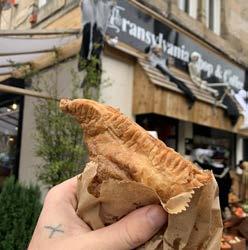
Our pick: Try their white cheese turnover for £3
Kurdish Street Food 12-14 Allison Street
I would hazard a guess that everyone reading this loves, or know someone who loves their falafel wrap. What is there to say that hasn’t already been said? Juicy, freshly made falafel, crunchy and varied salad all wrapped in the fluffiest bread this side of the Clyde.
Our pick: Erm… the £4 falafel wrap of course!
The biggest smile on Victoria Road can be found in the humble Party Cake where you can find Ramazan serving up some traditional Turkish treats, including (unsurprisingly) probably the best Baklava in Govanhill. Our pick: Get a massive cheese açma (croissant-like Turkish pastries) for just £1.80
Continental Deli 503 Victoria Road
Located right next door to Short Long Black is Continental Deli. It has a brilliant timeless feel and does amazing sandwiches and essential breakfast rolls.
Our pick: A ‘New Yorker’ with all the toppings for £4.50
Pakistani Street Food 412 Victoria Road
Rated top on many takeaway apps, nothing beats going into this little gem, decorated in the Pakistani truck style, to chat with the guys there as they prepare warm stuffed, messy-to-eat parathas.
Our pick: Make sure to get a napkin with an aloo (potato) paratha for £5
Delicious Corner 232 Allison Street

What it says on the tin, a wee takeaway shop on the corner of Allison Street and Annette Street serving up some delicious South Asian snacks from samosa salad to aloo tikki. Our pick: If you’re hungry, you can’t go wrong with their £3.50 kebab roll

Vegan and Veg Café 527 Victoria Road
This family-run place lives up to its name — a little café just near the park entrance selling a medley of South Asian veggie and vegan delights to sit in or take away. Our pick: Recapture that taste of summer with their samosa chaat for £5
Short Long Black 501 Victoria Road
Your best bet might be to get yourself a midweek lunch from this popular Southside hangout as the queues can stretch down Victoria Road at the weekend! They do focaccia sandwiches and the like but c’mon…. Sometimes a decadent bun of sugary goodness is what we all need.
Our pick: The biggest, stickiest cinnamon bun you have ever seen for £3.30
Bowman Street
The cafe with the warmest welcome in the Southside is conveniently located just across the street from our newsroom, so you may run into one of the Greater Govanhill team on the coffee run
Our pick: One of their sweet or savoury crepes to warm you through the winter months from £7
Photographer Simon Murphy has become a familiar face around the streets of Govanhill, walking camera in hand in searching for people that catch his eye. His black and white portraits of Govanhillians have gained him some 9000 followers on Instagram, and resulted in multiple awards. His works have been exhibited in shop and café windows around the neighbourhood, collectively making up a portrait of a place.

His latest project develops this idea further. He was the recipient of Kodak’s Film Photo – Visionary Project Award and received 100 rolls of film a prize. He decided that he wanted to take his audience on the journey of using them.
Each roll of film contains 10 shots, and Simon has committed himself to share at least one image from each roll, even those that he’s less than happy with. He’s aware of the false narratives that social media can convey, and, as a photography educator, doesn’t want that to be off-putting to learners. “I don’t expect every portrait to be fantastic. I want people to know that not everything I do is good. I want people to know I make mistakes.”
Simon is also releasing a short video for each roll, telling the story
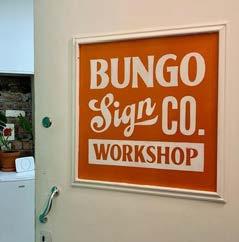
Three local sign painters have opened a new studio and workshop space off the lane that leads to The Deep End. Bungo Sign Co. brings together the talents of Rachel E. Millar, Hana Lindsay and Duncan Pearce.
Rachel said: “It’s perfect as it’s in a thriving area with plenty of independent shops and artists”. “We can now collaborate on bigger projects with more hands, have set dates to host some beginners sign writing workshops and would like to put on small exhibitions and pop-ups in the future. We’re also working on launching a dedicated ‘Sign Hotline’ so keep an eye out for that!”.
of the images he takes. This is something he treads carefully with and only does with the subject’s permission: “I’m always concerned that sometimes the images that resonate with people are the hard luck stories. Yet people have so many facets to their life, that this can kind of label them – and stay with them.
“I’m keen that, as an artist, my shots cause viewers to ask themselves questions rather than having everything revealed. I want them to think ‘there’s someone who I’ve haven’t spoken to before’ or ‘that’s a culture that I don’t know much about’. My hope is it makes people more open to other people.”
Simon has been shooting images of Govanhill for twenty years now, something he began while studying photography at college when living in the area. “The place is incredible. It’s like no other in the city and there’s lots of reasons for that. People are in the street more than any other place and because it’s a small area with a lot of houses, naturally you see more
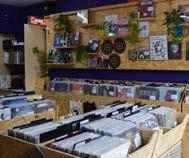
Radio Buena Vida is once again filling the airwaves with live shows of global tunes and Glasgow patter – this time from their new home! The station resumed live programming on 12 October with a show from co-founder Speedy RBV followed by shows and mixes from some of Glasgow’s most exciting talent including Junglehussi and Boosterhooch.
The new space will include a coffee shop where you can tuck into some cakes while watching whatever DJ is on spinning at the window. At the time of going to press, they were open for takeaway coffees but will soon be open for sit in.
people. I’ll turn a corner and see someone I’ve never seen before and that’ll keep happening because of the nature of a place; people move in, people move out, people visit. It’s forever changing.”
Some Great Reward have moved premises from Victoria Road to The Cooperage. They made the difficult decision to leave when their five-year lease expired: “As seems to be happening throughout Govanhill, we’re seeing more and more rent hikes... the proposed increase in the new tenancy agreement would’ve made continuing our business untenable”.
And so they’ve found a new home within the Cooperage – a colourful courtyard tucked away from 674 Pollokshaws Road – home of small businesses trading everything from vintage clothing to vegan treats. “We miss Victoria Road, but we’re excited for our new home and what is turning into a great community hub”.
At 17, Bob Bogle filled in a ‘Find Your Career’ computer programme, which suggested three possibilities – university lecturer, religious preacher and stand-up comedian. In the years since, he has been all three. For the past 20 years though, Bob’s been in leading roles across Scotland’s charity sector. He’s passionate about fighting for equality and against poverty, having been both homeless and very hungry.
Hey Bob! What are you wearing today?
I love the early 1970s trans-Atlantic look –think successful Californian realtor or Vegas showbiz agent. I’m teaming a Maculette of England sports jacket in ICI’s ‘Crimplene for Men’ fabric with a pair of period waffle weave polyester trousers. The shirt is also manmade and from what was West Germany. Boots are modern, but 1970s style. My briefcase is the 196070s acme of attaché cases – American Tourister’s ‘Escort’ model. After many years, I recently found one in the US – unused in its original packaging. These are my favourite sunglasses, bought from Strange Ray Vintage in Kirkcaldy. Now, where’s the PanAm departure gate?

What or who influences your style? Despite sometimes very tough times as a kid, it’s the happy things that stay with you. 1970s music, movies and TV featured hugely in my childhood. With those come the clothes. That decade still fills my heart and my soul – wearing 1970s styles brings back all the happiness I knew then, without the sadness. It makes me feel safe.
What prints, textures or colours do you seek out?
I have a real soft spot for my Hepworth’s Crimplene jacket that I’m wearing today. It has no natural fibres whatsoever and is possibly indestructible. I love the fringed leather chaps I wear on my Harley Davidson along with a silver leather biker jacket and matching glittery helmet. Satin or smooth patterned dagger collared shirts always do it for me, but my guilty pleasure is full ruffle-fronted 70s dress shirts – made for a velvet jacket!
Okay, let’s cut to the chase here. Tell me about the bowlcut. I love my bowlcut! Jim’s Barbers on Calder Street have been cutting mine and my son’s hair for over 10 years and we both
travel a fair distance just to go there. About four years ago, I decided to take the plunge and go for a full bowl and they’re the only scissors I trust. The twins, Michael and Sinead, did a wonderful job. It takes real skill – and a steady hand – to create a bowlcut.
Do you have a style icon?
Obviously, the entire cast of the original Starsky & Hutch. 1970s movie icons also have a great influence on my style.
My late mother was a beautiful woman and dressed remarkably stylishly given our circumstances. In her younger years she worked as a model with her long blonde hair in a towering beehive. The greatest male style icon for me, though, was her brother – my Uncle Ben. When I was growing up, he would fly in from abroad wearing open-chested dress shirts with real gold chains and medallions worthy of Tom Jones. All teeth, tan and massive charisma, he was brighter than the sun in my overcast existence. I remember he had a huge Volvo estate that would actually wolf-whistle every time it fired up. Even now he’s a powerful, stylish and imposing figure.
My father always told me “life’s not a rehearsal, son”, but for years I never had the confidence to dress exactly as I wanted. But thanks to my partner finally convincing me it was okay, I’m rarely without flares. I work in a sector that embraces diversity so I am very thankful for that freedom. I’ve noticed that there are fewer negative reactions when you’re self-confident and wear your style as if it’s the most natural thing in the world. Just be you and both you and the world will be happier for it.
But be prepared to be stared at. I’ve had strangers ask for selfies, which is still a bit bizarre.
Interview by giacinta frisillo Portrait by Alexander Hoyles Interview by Marzanna Antoniak
POLAND
Łysa Góra
Interview by Marzanna Antoniak
POLAND
Łysa Góra
I’m from a village called Lysa Gora (meaning Bald Mountain) in southeast Poland near the Slovakian border. People there kept pigs, cows, geese, hens and horses on their farms, and commuted to nearby cities for work. Living surrounded by mountains and forests, I would go skiing and on regular trips with friends.
I was the oldest of seven siblings. We lived with my grandfather until I was six, and then we moved to live by school as both of my parents worked there. My mum was a cleaner and my dad was a teacher of art and home economics. He also painted pictures and religious souvenirs for a local church.
I went to vocational school where I qualified as tiler and floor-layer. After school, I got a job at a large construction company where I worked until I was conscripted into the army. In 1989, the president of Poland, Lech Wałęsa, opened the borders, and I travelled to France. Later I went to work there harvesting grapes. A year later, I got married and moved to the Polish-German border where I worked in construction. I had some spells working in Austria and in Germany too.
I came to Scotland in April 2006 (persuaded by my brother-in-law) and found myself in Ayr. My English vocabulary at that point amounted to ‘Let’s go!’ and ‘OK’. I used to take three dictionaries to the job agency. The woman there was very kind and we did our best to communicate. I drew a bathroom to explain I could do bathrooms and she thought I could clean them, so I spent three weeks cleaning caravans. Later, I was sent to work in a carpentry shop and worked on roofs. A local man was looking for people to work on his house and I would finish the roofs at 4pm and go there to work afterwards, seven days a week. For two years, I worked non-stop without taking breaks. I was 36 and didn’t get tired at all. Over the years, I lived in many places around central Scotland, working as a cleaner in Tesco, in a biscuit factory, and as a logistics manager. In 2017, I began working for myself and two years later I found a flat in Govanhill where I’ve been living ever since.
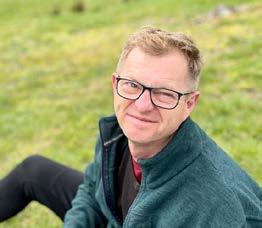
I’m happy here. Everything is close by, including the large park. I’ve got very nice neighbours, even if they do change a lot. I like being part of the many cultures in Govanhill and being a familiar face in every local shop. It’s been almost four years of a contented and peaceful life here for me.
I want to keep being proud of my twin sons and my two granddaughters. I’m going to live a long life and I picture myself living in a cottage house by a loch in the countryside and growing my own vegetables.






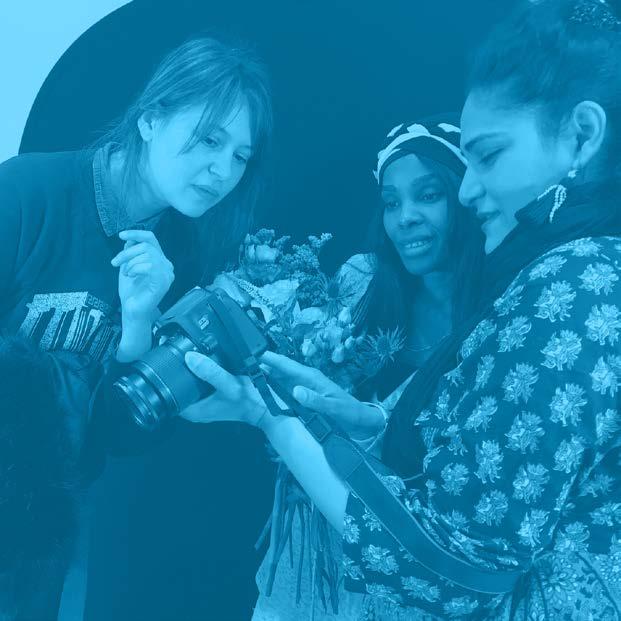



The Ferret and Greater Govanhill magazine have teamed up to examine responses to health inequalities as part of a new collaborative project –Mind the Health Gap.
Over the coming months, we will be developing a series of investigations into the health gap, assessing potential solutions to the issue.
As the project launches, The Ferret’s fact checking arm – Ferret Fact Service – has taken a look at some of the indicators of health inequality, to explore how poor health can hit some harder than others.
The Scottish Government measures the mental wellbeing of Scots on the Warwick-Edinburgh mental wellbeing scale. It uses a survey with multiple choice questions to assess the mental health of the population.
Adults in the ‘most deprived’ areas are about 3x more likely to have below average wellbeing than those in ‘least deprived’ areas.
estimated healthy life expectancy for women in Scotland
60.9
estimated healthy life expectancy for men in Scotland
This is different to overall life expectancy, and estimates the number of years people live in ‘very good’ or ‘good’ general health. This is based on how people perceive their own health in an annual survey. Healthy life expectancy in Scotland has reduced in Scotland since 2015-17.
The difference between the least and most ‘deprived’ areas in Scotland shows an even wider gap than for overall life expectancy. Those living in the ‘least deprived’ areas can expect to live in good health for around 24 years longer than those in the ‘most deprived’.
Deaths of those between 15 and 44 are also measured by National Records of Scotland. It tells us how many people in Scotland are dying in the period of their life when they should be relatively healthy.
The mortality rate of people in Scotland in this age range decreased between 2002 and 2014, but increased again after that. In 2020, you were 9x more likely to die between the ages of 15 and 44 in Scotland’s ‘most deprived’ areas compared to its ‘least deprived’ areas. The absolute gap between the most and least ‘deprived’ areas reached its widest level in at least 25 years.
After consistently increasing for over the last four decades, overall life expectancy stalled in Scotland in 2013-15. This took place at the same time as other causes of death were increasing, particularly drug and dementia deaths. Since 2017-2019, women’s life expectancy has fallen by 19 weeks, while men’s has fallen by 33 weeks. Much of this was due to covid.
Postcode-related differences in life expectancy is one of the starkest indicators of health inequalities in Scotland. Women in the ‘most deprived’ areas of Scotland have a life expectancy 10.5 years fewer than those in the ‘least deprived’ areas. For men, the gap is 13.7 years. In Govanhill East for example, life expectancy from 2016-2022 was slightly below the Scottish average; 78 years for women and 72 for men.
Scotland’s life expectancy is the lowest in the UK.
64,093
deaths registered in Scotland in 2020 17,153 of which were considered to be avoidable
Avoidable mortality is a measure of deaths which were preventable or treatable through effective available healthcare. The rate of deaths had been relatively similar in years prior to the 2020, but increased during the height of the covid pandemic. Those in Scotland’s ‘most deprived’ areas are 3.9x more likely to die from an avoidable death than those in the ‘least deprived’ areas. The leading causes of avoidable deaths were cancers, circulatory system diseases and alcohol and drug related issues, as well as covid.
people per 100,000, cancers of the trachea, bronchus and lung in ‘most deprived’ areas
27.8
people per 100,000, cancers of the trachea, bronchus and lung in ‘least deprived ‘areas
Cancer rates for those under 75 have been broadly increasing in Scotland in the past two decades, from 417.5 people – per 100,000 in 1999 to 447.1 people in 2019. Overall, cancers are more common in the ‘most deprived’ areas of Scotland, but this is not the case for every type of cancer.
‘Most’ and ‘least deprived’ refers to data zones identified in the Scottish Index of Multiple Deprivation. For more information on data sources for all the above please see the article on www.greatergovanhill.com
life expectancy for women in Scotland average life expectancy for men in Scotland
of those surveyed annually said they have below average wellbeing
from ‘most deprived’ areas said they have below average wellbeing
of people aged 15-44
11am and before starting his long restaurant shift, Ioan has a couple of hours to play with his three-year-old son, whose current loves are his toy cars and spiderman.
Since Ianis was just a couple of months old he has had asthma to an extent that has seen him hospitalised. Ioan knew what was wrong right away. “It happened to me too when I was a child,” he explains.
He and his wife struggled to get medical professionals to take them seriously. They resorted to returning to their home country of Romania and paying for a private doctor, whose diagnosis was finally accepted back in Glasgow.
Meanwhile they did what they could to keep the symptoms at bay. “One important thing is to make sure the house is not damp because that makes things much worse,” Ioan says.
But the 22-year-old father – who had previously lived in a flat with a prepaid meter – hadn’t understood that because he was not providing his energy company with readings, his bills were under-estimated. Earlier this year, it emerged the family owed £2,200. It’s an impossible sum to pay on their household income.
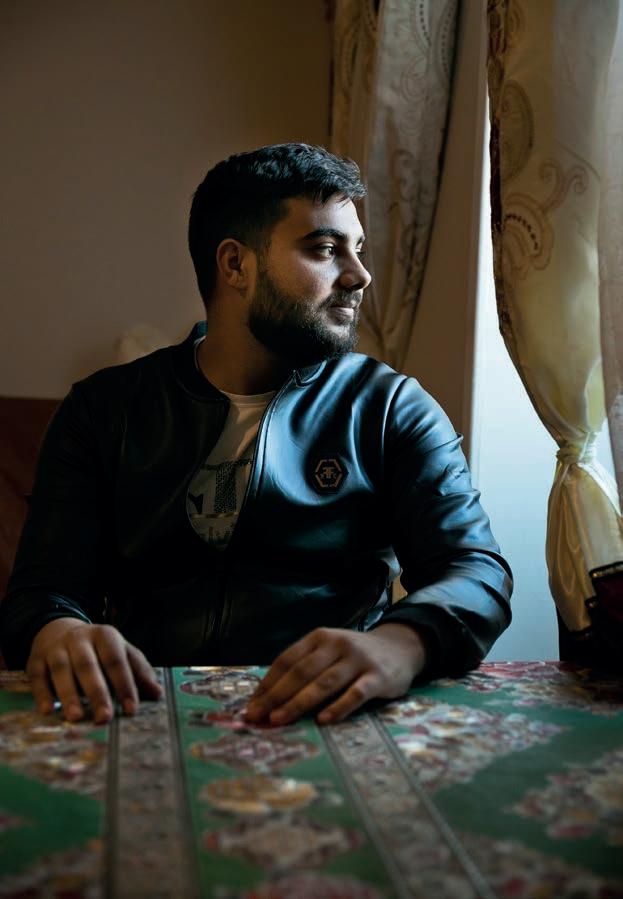
Friends put him in touch with South Seeds – a Govanhill community organisation which provides an energy advice service, where advisor Agnes Berner sourced grants to cut the debt in half and helped him set up an affordable payment plan. “It was such a big relief,” he says.
Rising energy bills have been the story of 2022. The monthly increases in both gas and electricity prices in April 2022 alone were by far the largest ever recorded since 1988, and have shot up again in recent months. Meanwhile the profits of many energy companies are eye-watering. Last month Shell announced third quarter profits of over eight billion pounds.
Estimates on how stark the impact will be vary, but some claim they will push up to two-thirds of UK households into fuel poverty by January 2023. That’s despite the help of the UK Government’s Energy Price Guarantee – which means unit prices will be capped until April 2023 – and an additional £400 through the energy bills support scheme.
What’s less widely reported, is the devastating impact that cold homes will have on the health of communities up and down Scotland.
According to a report by the Institute of Health Equity, homes that are cold due to increasing fuel poverty are about to turbo-charge health inequalities. That means people who can’t afford gas and electricity are statistically more likely to suffer from health conditions – or even die younger – than those who can.
Living in a cold home – more likely to be damp and mouldy – can cause and worsen respiratory conditions, cardiovascular diseases, poor mental health, dementia, hypothermia and problems with childhood development, they explain.
Luckily in a neighbourhood like Govanhill, there are support agencies determined to cushion people wherever possible.
Eoin Carey
the energy advisers fighting to keep people warm this winter
homes that are cold due to increasing fuel poverty are about to turbo-charge health inequalities.
South Seeds, with its bright and welcoming shop front at the top of Victoria Road, can’t offer the structural changes they say are so urgently needed.
But it is fighting back regardless. What it can offer –including providing empowering energy advice, sourcing financial support and advocating for people when things go wrong – is help keeping people warm, or getting them reconnected.
There are Scotland-wide phone based advice services, but this type of face-to-face service is certainly not available everywhere. And it’s getting results.
Over the last year, their clients have benefited to the tune of £118,441 in emergency vouchers, supplier refunds, good will payments and hardship funding with a further £16,050 provided in the form of warm home discounts.
They’ve conducted 2,056 appointments in the time period, helping people across G42 and G41 postcodes.
This year looks set to be even busier.
“We’re now seeing people whose fuel bills are higher than their benefits,” says Poppy Ives, who works alongside Agnes in the bustling office.
Already this morning the team have been busy applying for fuel vouchers –some provided by charities and others by energy companies themselves – for people who simply can’t afford to topup. Some of these appointments have been squeezed into an already bulging diary. There’s a month-long wait for nonurgent cases.
severe depression he’s tried to take his own life twice. He’s back on medication now and doing much better.
The worry about fuel bills is not helping. “It’s really bad for my mental health because to save myself getting really cold I end up going to my bed at 4 or 5pm,” he explains.
South Seeds have helped him apply for a warmer homes discount. “They took all my details and they’ve told me I’d been awarded £320 by the energy company. So with that money I’d be able to start turning it on for at least a couple of hours.” It’s a simple fix, but life-changing for him.
Nearby lives Bob Nelson, a wheelchair user whose electricity use is high. He has arthritis and has suffered multiple heart attacks, mini-strokes and survived cancer three times.
His energy bills are paid by Fuel Direct – in which a payment goes directly from his benefits to the provider –but had not increased for years leading to debt of £1,200.
Next on the team’s schedule is a home visit to a family with a prepayment meter that’s constantly out of credit.
In Govanhill homes, 27 percent of residents have prepayment meters, according to the most recently available data. The Scottish average is just 16 percent but that rises as high as 69 percent in some deprived neighbourhoods. The most affluent have none.
Poppy is increasingly aware of warrants being granted to fit prepayment meters where people have run up debts. Comparison website Uswitch claims 60,000 new meters were installed across the UK in the six months to March.
But meters also cost customers more. By September, Citizens Advice UK had seen 18,000 people unable to top-up their prepayment meter. This family is far from alone.
Once inside their tenement flat, Agnes takes a look at the meter and finds that from a £5 top-up, £1.60 went to paying back the emergency credit and £1.90 to a previous debt.
It leaves just over £1 of credit after the standing charge is deducted.
Poppy explains: “They owe £500 and so every week money from the top-up goes towards the debt.” She can apply for hardship money on their behalf to ensure they can stay on supply, she says, offering another appointment.
Before we go, a woman living there shows me a bag of medicines she takes – antibiotics, painkillers and antiinflammatories. She mimes a shiver and runs her hand over the cold radiator. “This is not good,” she says.
Concerns about heating and health come up repeatedly amongst South Seeds clients. James has osteoarthritis in his knees and hips, angina and such
Poppy finally managed to track down Fuel Direct customer service and agreed a rate that should make Bob’s situation easier to manage. Meanwhile he’s been forced to use food banks just to get by.
South Seeds knows they are making a difference by “meeting people where they are” and “offering a personalised service”, explains manager, Lucy Gillie. This even extends to walking clients to other recommended services to help them find extra support.

“I think there is an efficiency achieved with a face-to-face service which internet and phone services fail to deliver,” she adds. “Staff are less likely to make assumptions or judgements when people present their energy problems face-to-face. And clients value their problems being solved, so they listen carefully to the energy efficiency advice given.”
But there is also frustration that the energy companies are not more proactive – and that Ofgem is not more able to hold their feet to the fire. “It’s often very difficult to get an energy company call handler to even open a complaint,” Agnes says.
In July, Ofgem, the energy regulator, demanded improvements from five energy suppliers on issues such as
debt, staff training, and direct debit increases. Poppy has seen improvement in those areas: “It shows that Ofgem’s actions can be effective. But unfortunately, it seems like they are struggling to fully assess all the complex problems customers experience when communicating with their energy suppliers.”
An Ofgem spokesperson said its “priority is to protect consumers” and claimed suppliers must be “proactively making contact to identify if a customer is in payment difficulty, assessing repayments on a customer’s ability to pay and ensuring debt management activities are done in a fair and reasonable way”.
“We closely monitor compliance of this and we have taken robust enforcement action as a result of the failings we have found,” they added.
But that’s far from the only issue, according to the South Seeds team, who want to see other structural changes including funding the retrofit of homes, investing in public spaces and ensuring people in the community earn a proper living wage.
The Institute of Health Equity report also flags that long-term change is needed. More immediate recommendations include local health providers better recognising the impact of cold homes and working with agencies like South Seeds.
Report co-author Tammy Boyle acknowledges the scale of the challenge can be difficult to comprehend. “I truly think we are moving into uncharted territory,” she says. “We can’t quantify the impact on health inequality but it will have a huge impact.”
But she believes there are steps we can take: “Every year there are millions of pounds in unclaimed benefits so we need to make sure people apply for everything they are due.” She says that local councils should also allocate emergency repair budgeting to warmer homes programmes, fixing boilers, broken windows and holes in the walls, and that health services should work more closely with third sector partners.
Back at Ioan’s house, playtime with his son is over. But his problems with gas and electricity bills are not. He was paying £40 a week a few months ago – now that’s at £80, just under half of the £170 he earns in the restaurant. He’s looking for another job. ”That’s really hard too,” he says.
South Seeds is applying for a hardship grant, which they hope will help the family through the winter. But as prices continue to rise, the future still feels uncertain.

Mind the Health Gap is a year-long project between Greater Govanhill and The Ferret, a Scotland-wide investigations media co-op. It will examine the way inequality leads to poor health and shorter lives, and our stories will focus on responses to the problems we find.
We began by consulting local organisations in Govanhill and health experts across Scotland as well as surveying our readers online. Many highlighted the importance of the link between warm homes and good health. With energy prices rising, it felt urgent to launch this topic first. But this is just the start.
Who else is making a difference in this area? And what topic should we cover next? Email: newsroom@greatergovanhill.com
In a survey of 100 readers…
54 said they were worried or very worried about energy bills.
28 said they had gone cold or hungry as a result of deciding not to use heating or cooking facilities in order to save money. 36 said their health conditions had been impacted by rising energy costs.
Encouragingly, 82 said they knew, or knew somewhat, where to get advice with their energy bills.
"I have definitely avoided putting the heating on for a very long time – doesn't help my chronic pain but I'm scared of not being able to afford bills."
“I have serious health issues and feel cold in the summer. But this past week it has been awful. I often go back to bed about 11.00am. This also means I get no exercise at all. I seem to be deteriorating.”
“I think mentally it’s a real worry. Having a child and having to get them to add extra layers of clothing isn't great, for her or us.”
“I'm freezing at the moment, but reluctant to use the fire in the daytime. So far, it hasn't made much difference to my health, though”.
• A community yoga group.
• Moneysavingexpert.com.
• A smart meter.
• My friends.
• The thought that the Tories only have a couple of years left.
• Community.
• Seeing industrial strike action gives me hope.
• I invested in insulation and high efficiency heating. Not everybody can do that.
• Not watching the news or going on Twitter.
• I have had an air-source heat pump fitted with a grant and this has reduced my bills considerably.
• South Seeds and Energy Savings Trust have been useful for energy advice and tips.
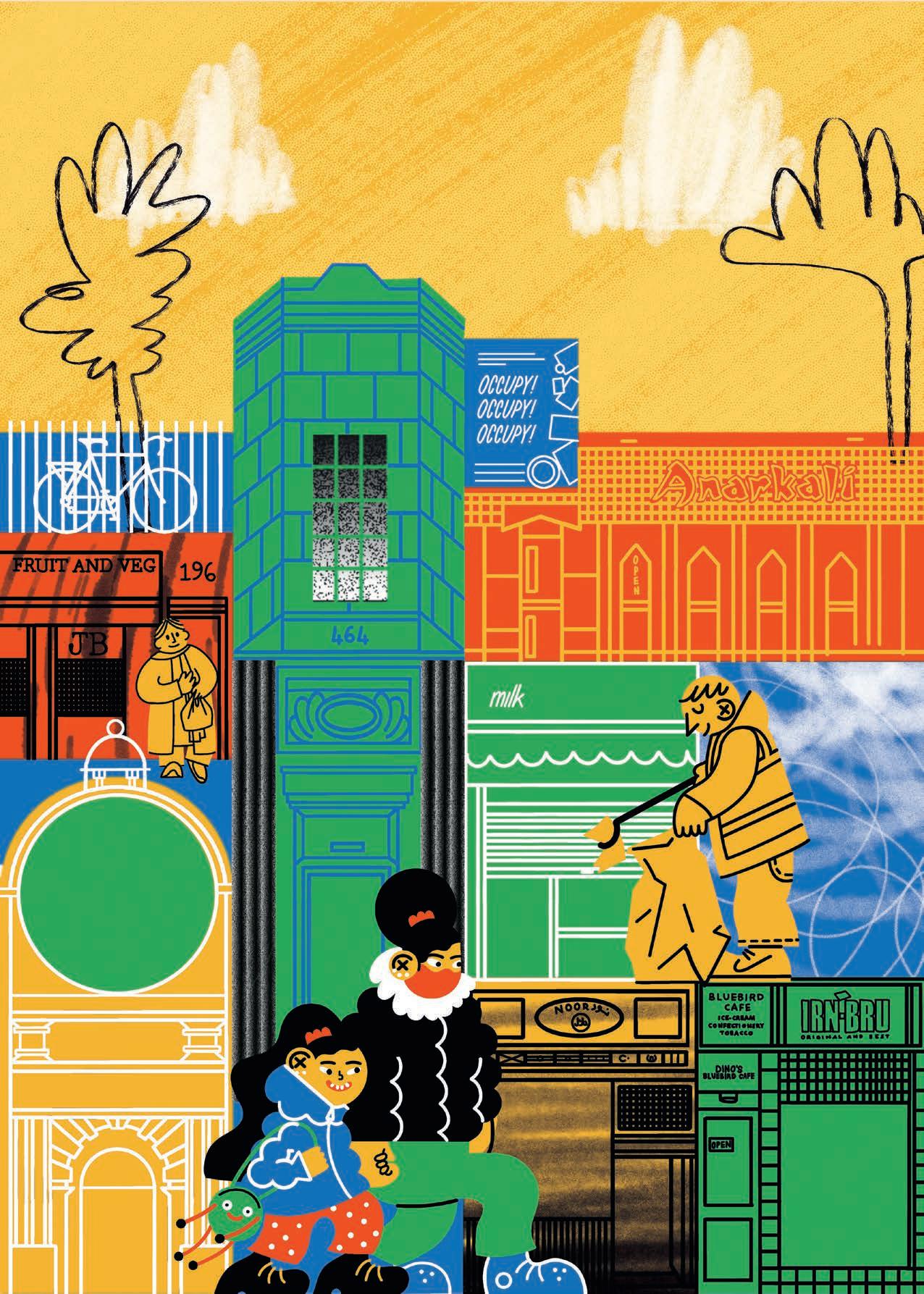 Illustration by Kate Benzies
Illustration by Kate Benzies
Integration may be the thread that runs through the articles in this section of the magazine, but what exactly do we mean by that word? Jack Howse delves into this slippery term.
For some, ‘integration’ is a buzzword in the worst sense – it is too politically-charged and an unhelpful way of thinking about multicultural Glasgow. For others, integration is a really valuable and community-building term defining a responsibility we all share.
Someone whose job it is to think through these definitions is Alison Phipps, the UNESCO Chair in Refugee Integration through Languages and the Arts at the University of Glasgow. She says its meaning is dependent on use: “When I hear it, I have to stop and do a bit of work with my linguistic scalpel and scrape it around to see which version of integration we are hearing. Are we talking about service delivery? Are we talking about community work? Are we talking about community development? Are we talking about intercultural encounters and intercultural dialogue as part of peace-building in society? Or are we talking about racist assimilation? It will depend on who's speaking and using the term as to which it is.”
She doesn’t agree with those who don’t like the term because of perceived negative perceptions: “I think it is a term used by different people in different ways and that makes it slippery. That makes it a term not to be trusted. And it makes it a term that is extremely useful.”
Often the word is used to mean assimilation, and while Alison agrees it would be good to have a term that didn’t have those connotations, she says it is not the word that is the problem: “What I have seen happen time and again, in these debates when there are racist tropes, is whatever term we use for the process of people coming together from different backgrounds to create a different society can be flipped to become a term that then will mean assimilation. In other words, the dominant group is saying to a nondominant group, ‘we want you to be just like us, but in ways which mean that you never can be like us, therefore we can always be down on you’. That's the problematic element with any term. We might use assimilation. We might use integration. We could use bananas if we all agreed that that's what it meant. That's how language works – it’s arbitrary.”
So where can we see integration within our community? We see it when health, housing and education services offer language and cultural support, at community workshops where people share stories about their culture’s cuisine, and during art and activism events where community leaders reflect the cultural diversity of the area. We also see it in more day-to-day interactions between neighbours in a close.
Integration has mostly been used in relation to migrant and asylum-seeker communities. But ideas of integration
apply to all – it is a communal responsibility to intentionally integrate and do it in a dynamic way. Community is everchanging, so integration should be too.
Savan Qadir, project manager at Refugees for Justice says he likes the word. To him: “The word integration means to integrate with something else. It also means adjusting to differences you may interact with. Integration is an ongoing process, it cannot be done in one go, it is a constant process that is ongoing and developing in time.”
“The responsibility is for the host and the group who is trying to integrate with the host. For example, when refugees integrate with the community they are living in, it is the role and responsibility of the host community and the refugee group to integrate with each other and build a community.”
Alison finds the word can work better when clarified with a preceding qualifier such as ‘decolonising integration’ or ‘restorative integration’. The latter term was introduced by Alison’s colleague, Hyab Yohanne, to mean: “a decolonial process of re-building the unfinished project of humanity that was interrupted by colonisation and coloniality."
It’s also important to recognise that societal systems are full of prejudices and biases that actively stymie integration. Take, for example, incarceration in prisons and immigration detention centres; real-life physical segregators that disproportionately affect ethnic minority communities. Or the government cuts to English language provision funding, meaning people don’t have the opportunity to learn. These policies form part of a larger culture war against immigrant communities and the creation of a ‘hostile environment’. Our new government doesn’t look poised to make any positive changes in this area.
So what can we do here in Govanhill? Community integration is the work of meeting, of sharing, of telling stories. It is not just on government bodies, services, dedicated groups or new arrivals. We should all campaign for change and better integration within these systems. It means restoring dignity to service delivery and actions, and intentionally building community in a way that is sustained long beyond initial hospitality, and accepting all the challenges that come with that.
What does integration mean to those working with community groups in Govanhill?
Marzanna Antoniak spoke to staff from a number of key local organisations.
“We believe that healthy, socially just and viable integration, along with a healthy degree of understanding between neighbours and people –whatever their values and backgrounds – doesn’t happen without being intentional about it… The Well Multicultural Resource Centre has had its home for nearly 30 years on Albert Road; perhaps the most valuable thing we have learned is the importance of building relationships within our community. This involves genuinely honouring and respecting everyone –whether individually or collectively. Relationships and respect are key.”
Penny Macleod, The Well
“At Big Noise you see children from across the community coming together to make music. The platform is music, not race, colour or language –though these are brought with every individual each day. This is what makes our integrated, noisy, welcoming and fun world!”
Alison Gornall, Big Noise
celebrating
common ground and shared humanity. There’s real value in investing in community spaces where people from different backgrounds and cultures can share experiences through art, storytelling, music and food.”
Back in 2005 when we started the Feel Good Women’s Group, one of the first things we noticed was the diversity of our members… but regardless of their backgrounds they all find common ground and interests when exercising together. Most of our members come from the south Asian community, but we have taken steps and interacted with other community groups to find out what we can arrange to make it more comfortable for people from other groups to join.”
Rizwana Saeed, Feel Good Women’s Group“Integration can
so much, but generally I feel that the material situation of many Roma people is better here compared to Slovakia or Romania which is key. However, if it comes to children’s aspirations and higher education, we can see that this is not improving. It could be that parents and young people are still not aware of the system and what opportunities or support are available. I believe that to be fully integrated, people must be aware of all that. Many young people still struggle in schools, and more support and effort is needed to make sure the next generation is in a better position than their parents when they arrived in the UK.”
Marek Balog, Director of Rom RomehaWorking alongside the Arab community has highlighted the importance of integration within different communities – along with its benefits. As humans we thrive off of finding a common connection with each other, and introducing our participants to different organisations and allowing for community integration and those connections ensures equal access to educational and social opportunities. Community integration allows for those newly settled in Scotland to plant their seed of hope and share their experiences and stories and be part of the cultural mosaic that is Scotland.
“Integration for me is about how we build communities that value difference while
our
Allison McKenna-Breen, South Locality Health Improvement Team, Glasgow City Health and Social Care Partnership
meanSarra W., Scottish Arab Women Association
Govanhill prides itself on being one of the most diverse neighbourhood in Scotland. The many waves of migrants who made it their home throughout the years have stamped their imprint on its character. The eclectic sounds of some 88 languages resonate through its ever bustling streets.
Like many others, I am fond of this abundance of cultural influences, but I keep wondering what it really means to celebrate diversity? How can we do it thoughtfully and responsibly, while avoiding superficiality and the commodification of peoples’ heritages without actually involving them?
Maybe the starting question should be: ‘Who is the benefitting?’. If the people being celebrated are getting a rightful share, then let’s celebrate! And as we do so, it’s important to remember that celebrating diversity is about people mingling, being curious of each other, learning from each other, and trying to better understand each other on a daily basis. Fostering genuine connections takes time, and requires mutual willingness, resources and unabating effort.
So where to start? On an individual level, the best thing we can do is to communicate with each other. Are you worried that your neighbours speak limited English and it’s going to be awkward? Remember that so much communication happens outwith words, through our tone of voice and body language. Attitude is a major component of successful interaction – the language barrier can be defied by using all you’ve got to get the message across. You can draw on paper or with your hand in the air, make strange noises, mime, point at things, show images... and laugh at yourself as you do it. The feeling of satisfaction when you manage to convey your message outweighs the fear of looking silly. Online translating tools can help when you get stuck.
When someone feels nervous, unsure of themselves, tired or sick, their English seems worse than it actually is. You can help them to feel more relaxed with a smile, a calm voice and encouraging gestures. Pause for a moment, give them time to gather their thoughts and find that word that they likely know but that got lost under pressure. You’ll be surprised at the difference a little patience can make.

Another thing we can do to create connection is be intentional about flipping the power dynamics. All it takes is a bit of curiosity. Ask how to say ‘How are you?’ in someone’s native tongue, or sign up for a language taster session. When we learn a new language, we are reminded how strange and hard-to-discern some sounds can be, and how much practice it takes to memorise vocabulary.
Curious, open-minded encounters lead to knowledge of world geography, history, customs and value systems, and make the person feel appreciated for who they are. I’ll always cherish the memories of helping my Persian friend cook fesenjoon stew, learning the steps of dabke dancing from my Syrian friends, or singing Roma songs with my former English students. Many people are keen to share their culture when asked.
Working with diverse groups is an artform. There are some people who can facilitate activities and discussions in a way that everyone feels included. They make it look easy but a lot of thought goes into it. They play to participants’ strengths and draw on individuals’ interests and experiences. The value of teachers, youth workers and community development teams in Govanhill cannot be overstated.
What’s the difference between a photo exhibition portraying residents of Govanhill shown in a city centre gallery and one displayed in local shop windows? What’s the difference between a film shown in a cinema and one screened in Westmoreland Gardens where residents can watch it from their windows? What’s the difference between world music performances happening in venues across Glasgow and ones that can be heard in Govanhill Park? The difference, of course, is who gets to take part.
Too often, we celebrate our diversity behind the closed doors of cultural venues that are unknown to those being celebrated. Accessibility is key to inclusion. That’s why taking things outdoors in Govanhill is vital and can help build collective pride about the greatest assets of this unique neighbourhood – its people. G42 Pop-Ups community market, GAMIS outdoor cinema, the Govanhill Street Music Festival, Govanhill Open Museum murals, Simon Murphy’s and the FONDS photo exhibitions in shop windows are some initiatives that have made local heritage a part of the public realm, exposing it to passersby and helping residents feel they belong.
Celebrating diversity isn't just about being proud of living in a diverse neighbourhood, it's about getting to know people from different parts of the community, on their terms. A true celebration of diversity is inclusive in nature. It is about being considerate and making deliberate, continuous efforts. It is about being curious and talking to each other.
Let’s start with trying our best to pronounce each other’s names. My name is Marzanna, and if you really want to know, it sounds very different from how it’s written. What’s yours?
Marzanna Antoniak did amazing work in this area as a Community Connector in Govanhill, and we wish her all the best of luck in her new role.
Celebrate Govanhill’s diversity with this pull-out-and-keep guide to making small talk in some of Govanhill’s many languages. Stick it on your fridge or above your desk and get practicing!
Hello! boo-na Bună! a-hoy Ahoj! che-sh’ch’ Cześć! Pri-veet! Mar-ha-ba! / Ah-laan! Ola! Hola!
Good morning /afternoon boo-na zee-wa Bună ziua! dob-riy den’ Dobrý deň! j-yen’ dob-reh Dzień dobry! dob-riy den’
How are you?
[I’m] well, and you?
Che maee fach’? Ce mai faci?
Soont bee-neh she too? Sunt bine, și tu?
Ako sa mash? Ako sa máš?
Mam sa dob-reh, a teh?
Yak syeh mash? Jak się masz?
Dob-zheh, a teh? Dobrze, a ty (pan/pani)?
as-salam a-ley-koom Buenos dias!
Yak teh? Yak veh? (formal) Keyf ha-look? Ko-mo es-tas? Cómo estás?
Dob-reh, a teh? / a veh? (formal)
ana beekha-ear, wa ant? Es-toy byen, ee too?
I’m (name), and you?
yeu soont X she too? Eu sunt Maria și tu?
ya som X a teh? Ja som Maria a ty?
yes-tem X, a teh? Jestem (name), a ty?
meh-neh zva-teh X, a teh-beh? ana is-mee X, wa ant? yo soy X ee too? Great! Excellent! Super! (roll your rs!)

Vee-bornyeh! Výborne!
Let’s go! Let’s do it! Seh mer-jem Să mergem! Poj’-meh! Poďme!
Sh’-fyetnye! Świetnie! Choo-doh-voh! Moom-taaz! Estupendo! / Henial!
Davay! Dawaj! hots’-meh Chodźmy! Davay! Yal-la! Vamos! Well done! Bravo! S-kvela pra-tsa! Skvelá práca!
Dobra robota! (roll your rs!) Mo-lad-yets! Ah-sant! Bien echo! Bien hecho! Thank you! mool-tsoomesk Mulțumesc!
j-ya-kooyem Ďakujem! j-yenkoo-yeah Dziękuję! dya-koo-you Shukran! (roll your rs!) Grath-yas! (roll your rs!)
ENGLISH ROMANIAN SLOVAK POLISH UKRAINIAN ARABIC SPANISHSouth Asian communities' connection to the UK began with the exploitation of culture, people and resources – an unequal relationship in which India was forced to trade and act as a venture for the British Empire. All the while, Britain justified its violence by claiming it was making the ‘natives’ more integrated into civilization.
When Britain began the enterprise for economic prosperity and cultural prestige through the East India Company and later the British Crown, it relied greatly on the labour of the South Asian people it was oppressing. Scotland also played a significant role, with many visiting India and returning with people they employed as their servants. However, it was seamen, also known as lascars, that resulted in one of the largest introductions of South Asians to Britain.
By arriving in Scotland as lascars, South Asians played an integral part in Britain's economic fortune. They worked on the ships that were returning from India, ensuring their mechanical and day-to-day function. Negligent working conditions led to the deaths of hundreds of men who were falsely considered better able to handle the heat in the engine rooms. They were seen as a cheaper option that could be exploited with far less retaliation as they were not part of unions.
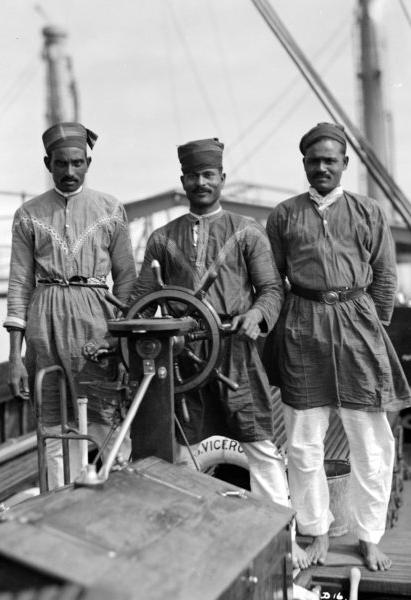
Once the ships arrived in Britain, the men desperately awaited their return home, while facing further degradation. Some lascars were provided with temporary accommodation in the Strangers' Home for Asiatics, Africans and South Sea Islanders. Eventually, many settled in Britain and it was these individuals that would form some of the first working-class South Asian communities in Britain.
By Summer Jamalhold onto familiarity and reject British people and culture. The reality was different. Although they remained in close proximity to other South Asians they were simultaneously establishing themselves as peddlers, opening up businesses and weaving their way into life in Scotland. In 1983, Yaqub Ali opened Castle Cash & Carry just off Cathcart Road, which would be the largest Cash & Carry in the whole of Europe. In 1984, Glasgow Central Mosque was built, the first of its kind in Scotland. In 1970, Bashir Maan became Glasgow’s first Muslim City Councillor.
Still today, many look at the South Asian community as being detached. A study by researcher Stefano Bonino's which focuses on the experience of Muslims in Scotland states that Pollokshields is the most ethnically segregated area in Scotland and suffers from continuous discrimination and racism. He identifies the dual shop signs in Urdu and English as an example of this segregation.
“Beloved community is formed not by the eradication of difference but by its affirmation, by each of us claiming the identities and cultural legacies that shape who we are and how we live in the world.”
- bell hooks
Glasgow was one of several cities where South Asians made their new home, with many new arrivals settling in the Gorbals. Many began their journey with very little apart from ambition and hope. This would not only motivate them to generate financial success but to form community bonds.
South Asian communities' contribution to Scotland was notable but they were still met with hostility by many. This encouraged people to seek out the safety and inclusion of other South Asians. Building a network not only yielded benefits, but also became a necessary means of survival. However, despite the necessity for safety and the forceful alienation, these networks were viewed as a reluctance to integrate – a desire to
However, community identity is not about appearing identical. Community forms when cultures and identities are not only preserved but shared. This is particularly important for marginalised communities who have had to fight for their culture and identities.
Glasgow does indeed have issues of racism, which are often overlooked to perpetuate Scotland’s image of exceptionalism. However, maintaining close cultural proximity and linguistic connections does not indicate an inability to integrate. Integration does not have to mean erasure. There is always more that can be done to create closer community bonds and to tackle issues of racism, and social and economic deprivation but this does not begin with disregarding important parts of identity.
Many South Asians may wear their shalwar kameez, and be loyal to their traditional cuisines, but they are still integrating into Scotland. They, like many other migrants, have reclaimed integration so they do not have to abandon their cultures and traditions. It is important to create a community with local people but it is just as important to retain your identity.
Three lascars of the ‘Viceroy of India’ (1929), standing behind the wheel of one of the ship’s tenders. Courtesy of the Waterline Collection, National Maritime Museum, LondonGrowing up in the Southside, I experienced the buzzing nature of Victoria Road and the multiculturalism reflected through businesses, events and general society. However, ever since I was young, I have been balancing two different cultures and have sometimes found it difficult to express my identity. As a young ScottishPakistani woman in Glasgow, I wanted to know if this feeling was personal to me, but also to learn more about the experience of being a first generation immigrant moving to Glasgow, so I sat down to talk with Shayala, my mum.
My mother is now a 46-year-old housewife with six children. She has bright eyes and the friendliest smile and is sure to have something freshly cooked every day. When I come home from work, I can smell the aromatics of cumin and onion sizzling. The front door is opened by seven-yearold twins who squeal in excitement that I am home and ask whether I have brought Uno to play. When I walk in I take off my shoes immediately and greet my mum. She always has on lipstick, usually a bright fuschia with liner around the outline of her lips. Before I can sit down, she offers me something to eat.
When did you move to Scotland and why did you decide to move here?
I moved here in the late 90s and lived initially outside of Glasgow for a couple of years before moving permanently to the Southside. I have lived in the area for over 20 years.
I moved to Glasgow when I got married, but the choice of moving to Scotland was made for me by my elders.
How did you feel moving away from Pakistan?
I felt very excited as there were opportunities here that weren't available in Pakistan. I liked the prospect of being able to provide for my sister and mother and it was always a desire for people to move abroad and gain opportunities. I felt sad that I was so young when moving away, but excited for better prospects in my life. I loved the colder weather, which was something I hadn't experienced before.
What are some of the main features you remember when first moving here?
Govanhill and Pollokshields were the most multicultural areas in Glasgow. The same clothing businesses currently on Cathcart road were here when I moved and have remained with the same families owning them. I also remember it was easy to integrate, as even though I was the first generation within my family to move to Glasgow, I befriended other families who had already integrated into the local society.
In which ways do you feel you integrated into Scottish society?
I learned how to drive, which is something I would have had no opportunity to do if I lived in Pakistan. This was probably the biggest skill I learned which was specific to western society. I didn't overthink about integrating, I went with the flow of things like getting a job. I picked up English fast and can understand it fluently, but I can't speak English with the confidence I would like to.
When thinking about Pakistani cooking, did you find it easy to find supplies here?
Yes, most things like basmati rice and halal meat were readily available in stores. There was not as much selection as there is now, with most supermarkets now stocking these items. What I did find difficult however, was standing and cooking – I was used to sitting down and cooking in Pakistan, so this was a little hard to adjust to.
What do you like best about the local area? I love the local businesses and shops that are available, and that my culture from Pakistan is now part of society. I love the mix and vibrancy available in Glasgow Southside as it is now a multicultural society.

Would you say that Glaswegian is part of your identity? Yes, I know more about Glasgow than I do about Pakistan. I have spent 27 years here and 18 years in Pakistan. I class Glasgow as my home and a part of my identity.
After interviewing my mum, I feel a sense of instant connection yet also sympathy. Her reasons for moving here were different to some in the sense that her choices were made for her, but also that she thought of the prospect of helping her family before helping herself. I feel a sense of gratitude that her move of 4000 miles has helped provide her opportunity and settle here, and that Glasgow Southside has welcomed her.
For more stories like this one, check out the brilliant book ‘She Settles in the Shields’ available from the Glasgow Women’s Library.
People who relocate to a new country can be divided into two categories, those who choose to move and those who don’t have that luxury.
For me, it was a choice. When I boarded my flight to South America, I was excited. I was looking forward to something different, seeking new pastures and greener horizons. The only Spanish I had was ´hola´ and ´gracias´, but I had travelled to other countries before not knowing the language, and everything had gone fine. I soon realised that this time would be different.
The many difficulties I experienced made me see how much I took everyday communication for granted. I struggled to ask for the simplest things, mispronouncing words, mixing them up, and saying the wrong words entirely. Shopkeepers blankly stared at me, vendors laughed, and bus terminal staff rolled their eyes as I failed miserably to go from a Glasgow Southsider to Spanish-speaking señorita.
What struck me most was my hesitation to participate. At home, I was always the first one to talk, to joke, to ask questions, but here I kept quiet. My self-consciousness because of my poor grasp of the language had silenced me. I felt shy around native speakers, saying as little as possible to get by.
A few months after moving, something changed. Instead of being afraid to be wrong, I decided to be humble about it. I had come to a place with no prior knowledge of its culture, people or language. I had to graciously accept my fate and greet situations with humour instead of embarrassment. Things began to click.
For the most part, people want to help. I just had to be vulnerable enough to let them. The more I spoke Spanish, the more I was able to ask for corrections. People repeated sentences for me, spoke slowly and corrected my pronunciation. I had the privilege to learn.
A
mando’s situation was very different. He grew up in Caracas, often ranked as the most dangerous capital city in the world, but had an eye on the rest of the world:
“I learned English because I read Harry Potter when I was ten years old. And I said to myself, I will learn English because I wanted to read the books in the language they were written in. I learned using a dictionary, translating music and watching movies in English with the subtitles turned on. Then I wanted to learn more about the culture too. Harry Potter changed my f**king life.”
His interest in foreign culture and language led him to study modern languages at a national university in Venezuela, but he says: “The situation was very hard. I couldn't finish the course because the government shut the university. After learning some language skills, I started to work in hostels and hotels instead.”


According to the UN, Venezuelans are the largest population group displaced from their country. Over seven million people have had to leave Venezuela, more than the entire population of Scotland. For Armando, the security situation became too serious to stay: “Ten years ago, I was kidnapped. Then in 2017, a guy pulled a gun on me when I was on my way to work, trying to steal my phone. My dad was living in Lima already so I called him there and five minutes later he’d called back to tell me he'd booked me a ticket to join him.”
Armando is enjoying his new life in Peru. However, his feelings towards why he had to move are mixed: “It is weird to explain. You feel shame. You feel sad because you shouldn’t have to move from your country when the reason for moving is out of your hands.”
Like many other refugees, Armando has experienced hostility. In a tale as old as time, the national media has disproportionately focused on news stories about crime committed by refugees. This exaggerated reporting, along with the government ushering in stricter immigration policies has increased animosity: “A lot of Peruvians assume all Venezuelan people are bad and we are stereotyped as this”.
Despite the contexts being wildly different, the parallels with the UK’s treatment of those seeking asylum are striking… negative media coverage and increased regulations governing immigration have resulted in a hostile environment for refugees.
Armando also said something that struck a chord: “I want to move to other countries but not just because of a bad situation; I want to move to meet new people and new cultures.” This was the reason I moved to South America, and I know I was lucky and privileged to be able to do it.
Those who move, whether through choice or not, are generally just seeking something better, or something else. It can be uncomfortable, and even scary. Particularly, when you aren’t able to communicate. After making this move, I have a newfound respect and admiration for those who take a leap into the unknown, in particular those who don’t have the luxury to choose.
Corra Foundation exists to make a difference to the lives of people and communities.
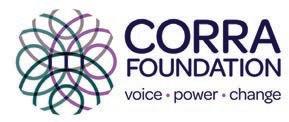
It works with others to encourage positive change, opportunity, fairness and growth of aspirations which improve quality of life. Corra wants to see a society in which people create positive change and enjoy fulfilling lives.
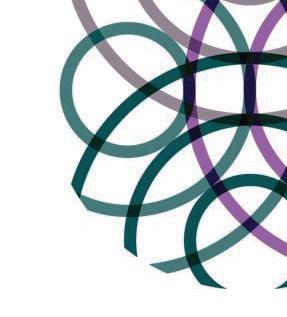
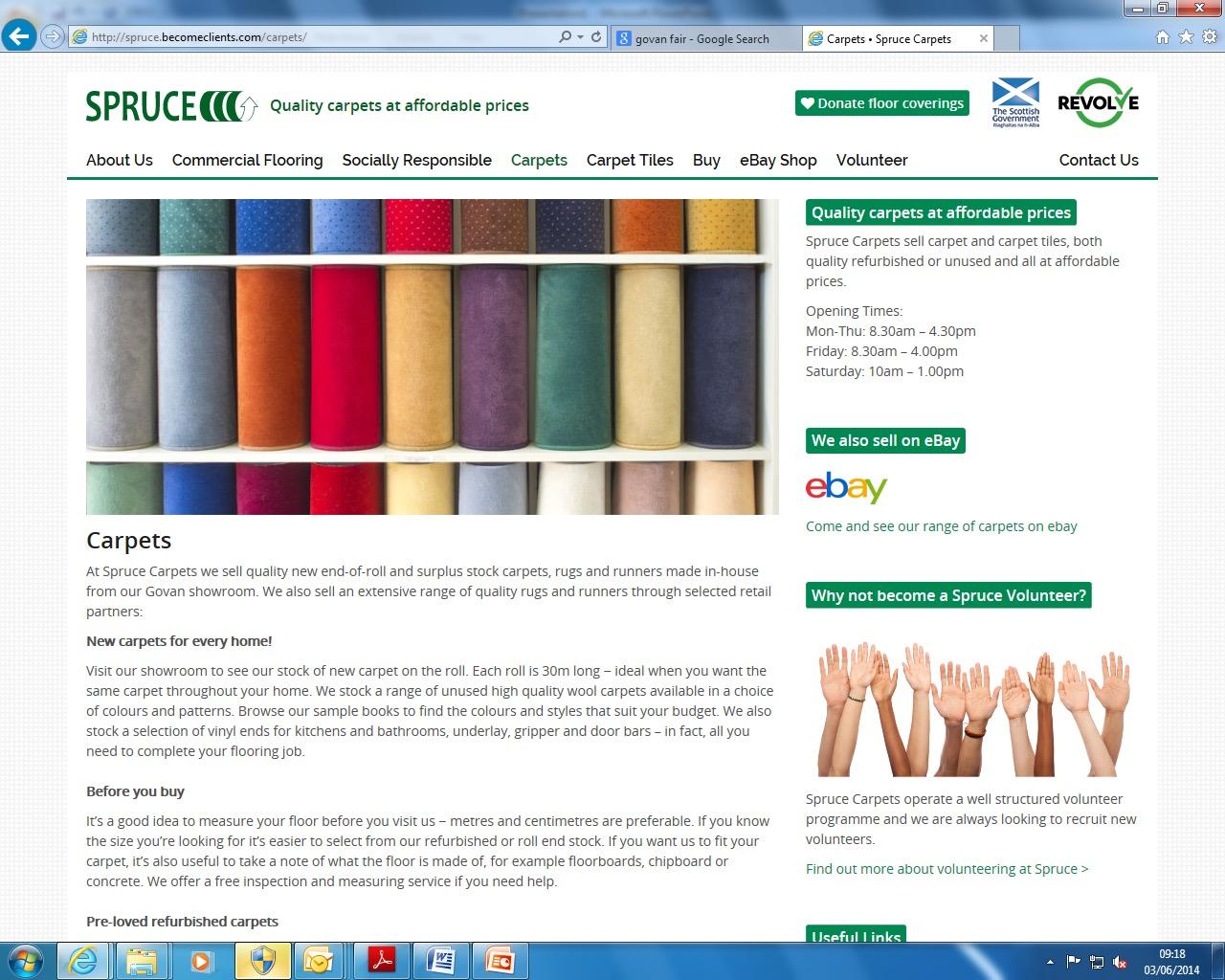

Corra gives grants to charities and grassroots groups that make a day-to-day difference to people and communities. Corra also works alongside communities where people are coming together to take action on the issues that matter to them.
www.corra.scot hello@corra.scot
Four reasons to advertise with us:


We deliver 4000 free copies and estimate each copy is read by between 2-5 people. Copies are distributed to venues and homes around the Southside.
Research shows that readers engage far more with print advertising than they do with digital. Readers hang onto the magazine and so adverts have a
We are a trusted brand valued by the local community. We operate as a social enterprise, reinvesting any profits back into the community.
100% of readers feel more positive after reading the magazine and over 80% have taken action after learning about an organisation, business or group
We offer very reasonable rates and big discounts for third sector organisations and returning advertisers. You can also spread the cost by becoming a business member. becki@greatergovanhill.com

As a translator and subtitler, I often get to work on truly fascinating projects – anything from mental health booklets for the Polish community to English subtitles for a Polish crime show. Recently, alongside colleagues Aleksandra Chlon and Magdalena Herok-Broughton, I had an opportunity to translate something really special: a ScotsPolish dictionary app.
Developed by Dictionaries of the Scots Language (DSL) and funded by the Scottish Government, this free app is a handy resource for Polish people living in Scotland. As well as more than 9000 Scots words and phrases, it features audio pronunciation guides, information on Scottish geography and notes on the local culture (yes –there is a note on Irn Bru!).
In the language section, there are common exclamations such as auch. But there are also words that have different meanings depending on the area of Scotland (like gyte, which in the North-East means a child or a young animal, while in the rest of Scotland it’s someone’s who’s been driven mad due to their anger or pain). And there are words that are used as part of phrases, for instance, shak fit means ‘to dance’.
I particularly enjoyed translating the culture notes. I wasn’t previously familiar with the blackening prewedding tradition (where the bride and groom are ceremonially gunked with a variety of substances) or the Makar function (the national poet of Scotland). My partner’s dad is a farmer, so I’d often heard about the tattie hoalidays (the October school break where people would harvest potatoes), but previously wasn’t aware how important it is in Scottish culture.
According to Statista, in June 2021, there were around 62,000 Poles living in Scotland, making it the biggest nonBritish community in the country. In Govanhill, Polish owned businesses such as the Polish Daisy grocer and the wonderful Bees Knees cafe have become part of the local culture.
Such a high number of Polish nationals in Scotland is nothing new – the two countries have a long history together. During WWII, after France fell in June 1940, as many as 30,000 Polish soldiers arrived in Scotland. The Polish Army had special educational units which aimed to develop friendly relations between the two nations and one of the Polish units even had a bagpipe band. Many of the older generation have a story about Polish visitors from that time. My partner’s granny always talks about Leon, a soldier who was stationed in her Fife village. He came bearing gifts of traditional Polish food, which Granny Black and her neighbours were keen to try.
There remains a number of monuments to Polish Scottish history around the country. You may have seen Wojtek the Soldier Bear in Edinburgh’s Princes Street Gardens. Wojtek was an orphaned brown bear who, in 1943, got
By Alicja Tokarskaadopted by a group of Polish soldiers in Iraq. As bringing pets into combat was not allowed, Wojtek was enlisted as a proper soldier. Shocking though it sounds, apparently Wojtek used to drink and smoke with the soldiers. After the war, when Wojtek’s unit was moved to Scotland, the bear came with. When the army demobilised, he was relocated to Edinburgh Zoo. His old brothers-in-arms used to visit him regularly.
In Barony Castle Hotel near Peebles, you can see the biggest terrain relief map in the world. The Great Polish Map of Scotland, was created in the 1970s and commissioned by Polish veteran Jan Tomasik who ran the hotel. During the war, Tomasik had served under General Stanisław Maczek, in the 1st armoured division of the Polish Home Army, who trained in Scotland and were entrusted with protecting sections of the East coast. They also played a vital role in battles following the D-Day landings. A statue of him was unveiled in Edinburgh’s city chambers in 2018.
Given this shared history, it’s not surprising that DSL decided to produce a dictionary app in this language pair. The Essential Scots-Polish dictionary has the potential to
General Stanisław MaczekJako tłumaczka i napisowczyni często pracuję nad niezwykle fascynującymi projektami – od broszurek na temat zdrowia psychicznego dla polskiej społeczności, po angielskie napisy do polskiego serialu kryminalnego. Niedawno wraz z Aleksandrą Chłoń i Magdaleną Herok-Broughton miałam okazję tłumaczyć coś naprawdę wyjątkowego: aplikację ze słownikiem szkockopolskim.
Stworzenie tej bezpłatnej aplikacji zleciła organizacja Dictionaries of the Scots Language (DSL), a projekt ufundował rząd Szkocji. Ten słownik to niezwykle pomocne narzędzie dla Polek i Polaków mieszkających w Szkocji. Zawiera ponad 9 tys. szkockich słów i wyrażeń, ale to nie wszystko: ponadto znalazły się w nim przewodniki audio po szkockiej wymowie, informacje na temat geografii kraju, a także notki na temat lokalnej kultury (zapewniam, że nie zabrakło wzmianki o Irn Bru!).
W sekcji na temat języka można znaleźć m.in. często używane wykrzyknienia takie jak zawiera słowa, które w różnych rejonach Szkocji znaczą co innego (np. rzeczownik dziecko lub młode zwierzę, a w pozostałych częściach kraju –osobę doprowadzoną do szaleństwa z wściekłości lub bólu). Nie można zapomnieć o słowach wchodzących w skład wyrażeń: np. czasownik fit przetłumaczymy już jako „tańczyć”. Największą frajdę sprawiło mi tłumaczenie notek kulturowych. Wcześniej nie znałam ślubnej tradycji blackening polegającej na pokrywaniu pana i panny młodych trudnymi do usunięcia substancjami. Nie wiedziałam też, że istnieje funkcja zwana Makar (narodowa poetka lub narodowy poeta Szkocji). Tata mojego partnera jest rolnikiem, dlatego często słuchałam opowieści o podczas których zbiera się ziemniaki). Nie wiedziałam jednak, jak ważną rolę okres ten odgrywa w szkockiej kulturze.
Z informacji organizacji Statista wynika, że w czerwcu 2021 r. w Szkocji mieszkało około 62 tys. Polek i Polaków. To najliczniejsza w kraju grupa osób spoza Wielkiej Brytanii. Dzisiaj polskie przedsiębiorstwa takie jak sklep Polish Daisy czy kawiarnia Bees Knees są nierozerwalną częścią lokalnej kultury Govanhill.

Ogromna liczba osób z Polski zamieszkujących Szkocję to nic nowego – wspólna historia obu krajów jest bowiem długa. Podczas II wojny światowej, po upadku Francji w 1940 r., do Szkocji przybyło aż 30 tys. polskich żołnierzy. W Polskiej Armii utworzono specjalny wydział edukacji dbający o rozwój przyjaznych stosunków między Polską a Szkocją, a jedna z polskich jednostek miała nawet orkiestrę dudziarzy! Wiele starszych Szkotek i Szkotów pamięta polskich przybyszy z tamtego okresu. Babcia mojego partnera często opowiada o Leonie, żołnierzu, który stacjonował w jej wiosce w regionie Fife. Do Szkocji przybył z prezentami: tradycyjnym polskim jedzeniem, którego i Granny Black, i jej sąsiedzi z chęcią spróbowali.
W kraju po dziś dzień zobaczyć można pozostałości polsko-szkockiej historii. Możliwe, że przechadzając się po edynburskim parku Princess Street Gardens, trafiliście na pomnik niedźwiedzia Wojtka. Nie znacie jego historii? Wojtek to osierocony niedźwiadek, którego w 1943 r. przygarnęła w Iraku grupa polskich żołnierzy. Pupile na froncie byli zakazani, więc Wojtek został wcielony do armii jako żołnierz. Chociaż brzmi to naprawdę szokująco, podobno Wojtek i koledzy z wojska wspólnie pili i palili. Po wojnie jednostkę
Wojtka przeniesiono do Szkocji, dokąd trafił również i on. Kiedy nastała demobilizacja, Wojtek zamieszkał w zoo w Edynburgu, gdzie często odwiedzali go potem dawni towarzysze broni.
W hotelu Barony Castle niedaleko Peebles można zobaczyć największą mapę topograficzną na świecie –Wielką Polską Mapę Szkocji. Projekt powstał w latach 70., a jego pomysłodawcą był właściciel hotelu, polski weteran Jan Tomasik. Podczas wojny Tomasik służył w kierowanej przez generała Stanisława Maczka 1 Dywizji Pancernej Polskich Sił Zbrojnych. Jednostka była szkolona w Szkocji, a do jej zadań należała m.in. ochrona wschodniego wybrzeża kraju. Dywizja odegrała też kluczową rolę w bitwach w Normandii. W 2018 r. w edynburskiej radzie
The Great Polish Map of ScotlandIrish people have been part of Scotland since the Dál Riada tribe (the original ‘Scoti’) settled the West coast from 400AD onwards, and were a part of all stages of development of Glasgow, and the towns and villages surrounding it, including Govanhill.

Migration often follows patterns, as friends and family follow established paths and settle close to familiar faces. This is how Govanhill and the Gorbals came to be known as Little Donegal. There was a vibrant community life and a regular connection back to their home place – a ferry used to run three times a week between Glasgow and Ireland.
A new book, Little Donegal: The Irish in Govanhill & the Gorbals has been written by Colm Bryce, using the history of his own ancestors who arrived in the Gorbals at
Govanhill and the Gorbals were once known as ‘Little Donegal’ because of the large numbers of Irish migrants who settled here.
the end of the 19th century. The book outlines different periods of migration and aims to challenge some myths that still exist about the Irish in Scotland. The hope is to encourage others to do the same. The Irish History Group at the Govanhill Baths is collecting stories and images from people about their family’s connection to Donegal and the Southside.
The book will be launched – alongside a new Irish walking trail – on 7 December from 6-7:30pm in Dixon Halls, 656 Cathcart Road. Find out more: govanhillbaths.com/archive/littledonegal
The following comic strip was created by storyteller, Rae McKinlay who grew up in Glasgow in an Irish family.


Co-authored by Francesca Sobande and layla-roxanne hill and published by Bloomsbury, Black Oot Here: Black Lives in Scotland shines a light on Black Scottish history, including the legacy of Black media, arts, activism and creativity in Scotland. Sobande and hill combine their love of photography and visual culture with their intention to create work that aids the archiving of Black Scottish history.
Becki Menzies spoke to Govanhill resident laylaroxanne hill, about the book and her own experiences of being Black in Scotland.

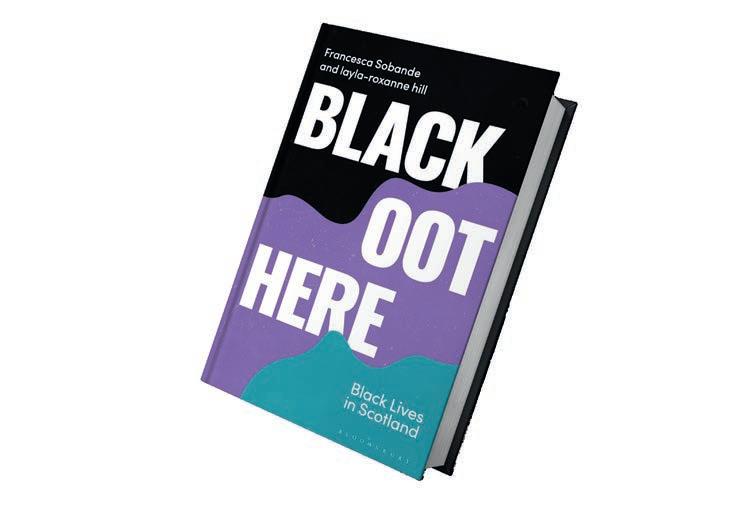
Why was it important for you to write Black Oot Here?
Growing up in Scotland during the 1980s and 1990s was an experience! Something which came up for both Francesca and I, is how few Black people there often were in various spaces which are part of childhood, be that in recreational and educational settings or even just the history of the place you are living in not including the lives of Black people. We were also conscious of the growing conversation and research on Scotland’s role in the British empire, and the many people who were enslaved as part of it, becoming the only Black Scottish history. Likewise, with experiences of racism often being the only way in which living while Black in Scotland can be seen or understood.
Black history and the lives of Black people in Scotland are nuanced but recognition is lacking. More needs to be done to ensure it is incorporated into national conversations about Scotland’s future. Acknowledgment of Black Scottish history needs to extend much further beyond Black History Month, traumatising media depictions and tired tropes such as the archetypal ‘strong’, ‘respectable’ and the ‘first’ Black person.
Scotland’s often presented as a comparatively more progressive and welcoming country, what do you think the current reality is for Black people in Scotland?
There’s a lot of rhetoric around Scotland being a friendly and welcoming place – and that’s not to say there isn’t an element of truth in that – and this makes life easier for Black people here, especially when compared to England or the US. However, much of this relies on several things, including the myth of ‘Scottish exceptionalism’ (that the people of Scotland are ideologically different to England), statements by public figures and institutions which claim to be actively anti-racist or doing decolonising work, and surface level representation or, worse a representation which doesn’t speak to the nuances and reality of being Black in Scotland. This makes speaking out against these narratives difficult and the reality is that the same
anti-Blackness people experience elsewhere in the UK and across the world, is here in Scotland too.
Was there anything that surprised you when you were carrying out research?
From the interviews we carried out, it is clear that Black Scottish history is alive and kicking. But the material on Scottish history that we came across painted an incomplete picture of Black Scottish life which left us thinking about how Black Scottish history has been treated. Portrayals of Black people’s lives in Scotland are often shaped by what has happened to us and not what we have done (or even, just in being unremarkable) and this is reflected in what is archived. When researching, many individuals, groups and organisations we discovered had contributed to Black Scottish history over the years could not be found easily, if at all. Work which challenges structures of oppression or offers an alternative vision, can often be appropriated, misconstrued, or made invisible. What was known, but still came as a surprise, is the crucial role of oral histories, personal albums and ephemera in reflecting the ‘everydayness’ of Black lives in Scotland, being as important today as at any time.
To bring it back to a local level, from your experience of living in Govanhill, do you think things are changing?
I’ve lived in Glasgow for around 20 years and in and around Govanhill for over 10 years. It wouldn’t be right to say that things haven’t changed – things change all the time! But in some ways, things haven’t changed! The Glasgow population has changed and that’s reflected in the growing numbers of African shops, food places and changes to the creative, cultural and media landscape by Black people.
Govanhill is often cited as being Scotland’s most diverse neighbourhood and that is true in some ways too. However, many of the experiences which I faced 20-odd years ago, I still experience today and from the survey responses and interviews for the book, some of those experiences are still lived by Black people across Scotland too. Change takes more than reading (or writing) a book or going to an event – though these things can help give us some context or grounding and be a collective experience. Change is a nuanced process, which involves time, care and understanding and I feel that is something which has shifted – people are recognising this. And this makes me feel hopeful.



 Illustrations by Jagoda Sadowska
Illustrations by Jagoda Sadowska
The South East Integration Network is a membership organisation, made up of around 90 non-profit organisations that work in the south east of Glasgow. Unlike other integration networks in Glasgow, who offer their own direct community services, SEIN works solely to connect and strengthen the work of organisations in the area. Groups talking to each other means more partnership work, better knowledge of community needs, and an overall more integrated community.
Our members specialise in a whole host of community practice, including health and wellbeing, music, advocacy, food, housing, LGBTQI+, asylum seekers and refugees to name a handful. Having such a diverse range of members really has redefined what is meant by ‘integration’. It’s not simply about New Scots and Old Scots living side by side, it’s about us all collectively working to create truly safe and inclusive spaces for everyone, irrespective of their faith, race, gender, sexuality, or any other characteristic.
As a network, we create opportunities for our members to connect and work together. We support them by sharing information about their activities; providing access to training and resources; and acting as a hub for community integration work in the south east of Glasgow.
We spoke to nine of our Govanhill-based members to find out how being part of this network had benefited them. The map shows just how impactful having a community-focused network is, and all the connections, projects and partnerships have happened as a result. This map is by no means an exhaustive list: there have likely been hundreds, if not thousands, of links created over the (almost) ten years we’ve existed.
The connections we've made through SEIN have been invaluable for the development of our organisation. We've been supported with resources, knowledge and use of spaces that we wouldn't have had otherwise. We've also co-produced with other members, like a community meal as part of the Govanhill Festival, catering the Southside Wellbeing Festival run by The Wee Retreat and Finn's Place, and a cooking class with the young folks at the Rumpus Room Summer Yard School.
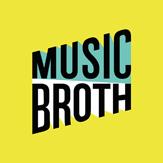
Through SEIN we’ve met many wonderful organisations doing great work in our community. Working together we’ve been able to reach more people and create new opportunities in wellbeing, music making and creativity. We’ve worked with the young people from Families Outside and YCSA, supporting them to create and express through music.
The Sound Lab SEIN has benefitted Sound Lab by putting us in touch with other local organisations, to share opportunities and signpost young people accessing our services to other organisations, for example Music Broth programmes that may be of interest.


We’ve worked with YCSA on a couple of projects, as well as delivering workshops and contributing to an event from the Women’s Support Project.
A lot of our meaningful community engagement occurs from meeting organisations and people through this network – it really is a wonderful recourse for impactful and powerful connections. Recently we’ve been working with the Women’s Support Project offering cycling sessions for the refugee and asylum seeking women, who probably do not have too many opportunities like this.


Over the years we have made many connections with a wide range of organisations through SEIN. These links with diverse organisations have meant that we can work more effectively with the local community, finding out about the needs of particular groups and partnering to run events and other outdoor activities and sessions. Amina’s Friendship group visited the Hidden Gardens for a tour and gardening session, and we worked with Urban Roots to hold joint volunteering days encouraging everyone to use their local greenspaces.








Being involved in SEIN has helped us to introduce ourselves and connect us with people who might not know what we can offer, or what our mission is. We’ve taken part in the Govanhill Carnival, which we’ve been lucky enough to be involved with in some shape or form since 2020, and we work on summer community film screenings with GAMIS.

SEIN is a very important network to us. Especially so during lockdown and covid restrictions. Working in conjunction with other organisations in our diverse locality is essential for our carers’ integration into the community. We are mindful of the services other organisations offer in our community that carers may wish to take part in. We hosted some of the young filmmakers from GMAC Film and they made a film about The Dixon Community.
We have made connections with other local organisations such as The Space, The Daisy Project, South Seeds, & The Hidden Gardens. This has been of great benefit as we primarily offer information and advice so getting to know other local organisations is essential because it means we can signpost for specialist help. For example, we have signposted to South Seeds for energy advice and The Daisy Project when clients disclose that they have experienced domestic abuse.
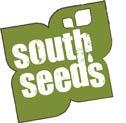
SEIN gives us an instant outlet to share information quickly across the neighbourhood. We feel informed because we always send someone from South Seeds to each SEIN meeting and every time they come back excited about meeting someone else who works in the area on similar issues. This means we have made numerous connections across the neighbourhood. We consulted all network members on our plans to transform the Old Changing Rooms and the results were really useful.

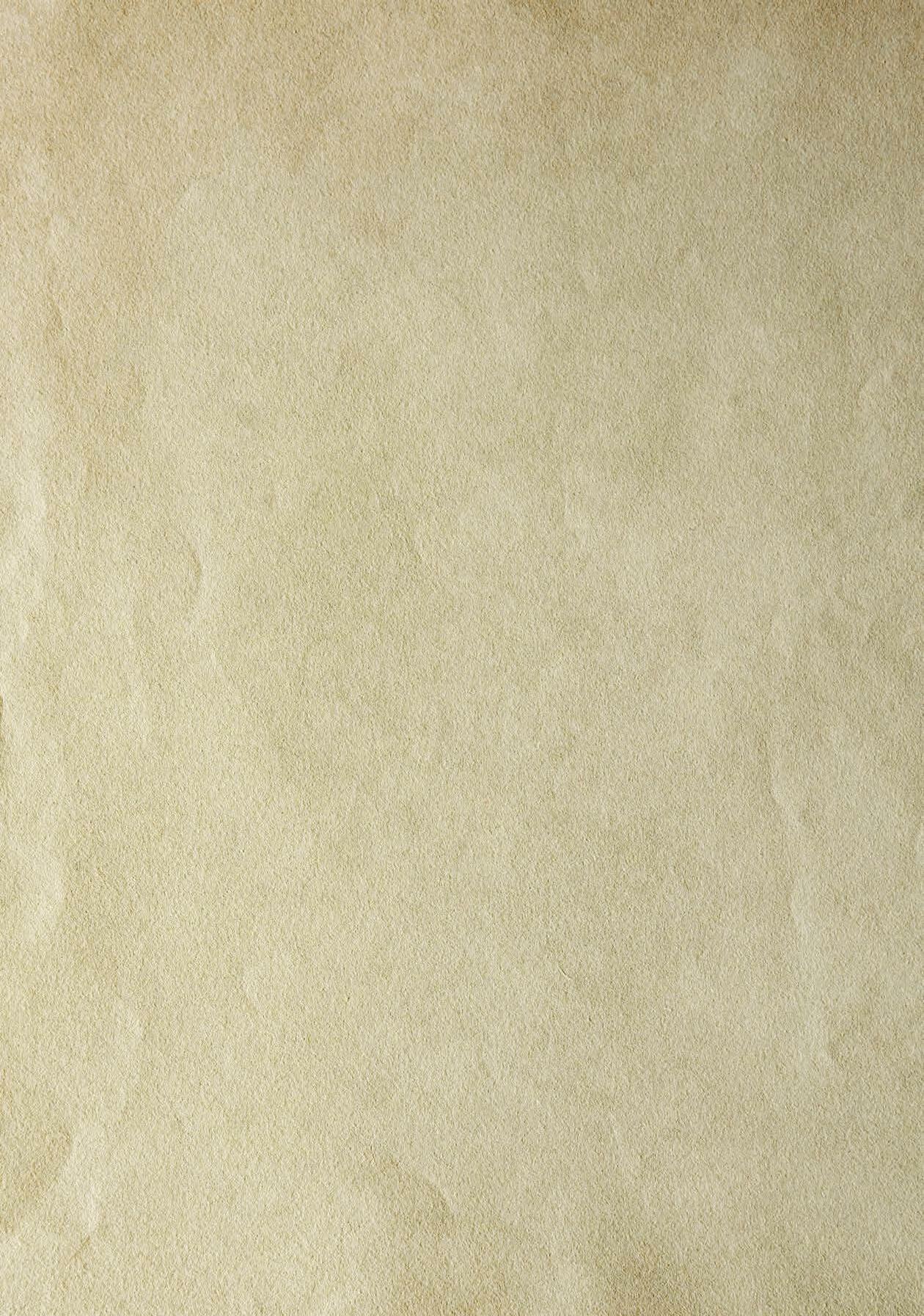

With thanks to Bruce Downie for providing historical information and pointing me toward the book Who Belongs to Glasgow, by Mary Edward.




I love being creative and going out around Queen’s Park and Govanhill to take photos. Photography helps me to tell a story and to show people how I experience and see the world through my images. During lockdown, going out with my camera helped me stay positive and feel good about myself. I have autism and taking photos keeps me focused and calm.
Photography has opened up new opportunities to meet people and experience new places. I’ve also met some amazing photographers who give me advice and support.
as one of their Surprise Squad, as well as with Changing Faces, National Autistic Society, Rare Diseases and Jeans for Genes. I have raised money for all of these charities because they do such important work and I have also benefited from them. It’s my way of saying ‘thank you’ for all that they do and the difference they make to people’s lives. I love helping people and spreading kindness. If I can change the way people think about disability or how they treat people, then that is really great.
is also something I have always loved to do. I dance and volunteer every week with Indepen-Dance and Y Dance. Dancing makes me feel like I am floating. I shut my eyes and nothing else matters.
and when I was younger

I found it hard to fit in and make friends. Through my photography and dancing I have created ways to feel positive about myself and challenge the ways some people might see me.
Now I am older, through my passions
I have created a platform to raise awareness around disabilities. I want to challenge how society treats people with disabilities and tell people to not stare or cross the street but be kind.
always have a smile or a wave for me. For my latest project at college I want to take portraits of all the local people I see, those who stop and chat to me. Our community makes me happy and I want to represent that in my project.
As part of Scotland’s Year of Stories 2022, Povestry, a charity inspiring inclusive citizenship, has produced Hector’s Talent, a story of a young red squirrel in Glasgow who is looking for his purpose.
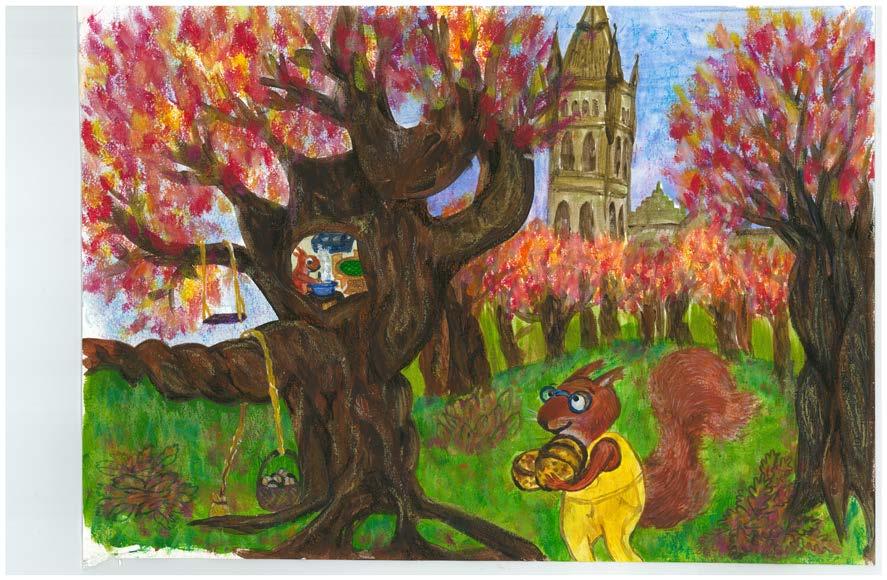
While the text was first written in English, we know that stories are shared in Scotland in more than one language.
Povestry recently celebrated its first anniversary and we are overjoyed to have been able to contribute several projects to our multicultural Govanhill community. As a community organisation, Povestry was built from a collective hope to encourage and contribute to a multicultural dialogue where community integration and active citizenship are shaped through storytelling and folklore. For this reason, our ethos is to organise and share projects where diversity and inclusion move hand in hand with stories and heritage.
In a year where stories are truly at the forefront of Scottish communities, we hope to encourage a dialogue between children who are otherwise unable to communicate with peers from different backgrounds, to form friendships and learn a new language together. Young pupils from different countries can now sit together with two (or more) versions of Hector, learn from each other a new language, and discover the shared vocabulary of friendship and community.
Maria Marchidanu
By Maria Marchidanu, Povestry SCIO Illustration by Tarneem Al MousawiROMANES – KALDARASH
Rahela Cirpaci
Sunday morning was a gloomy day And on his mother, Hector lay. ‘Why is my path always the wrong one?’ he cried ‘All I wanted to do was make the world surprised!’
Róise Nic an Bheatha
Bha madainn na Sàbaid dorcha agus liath agus chaidh Eachann a stigh do chuideachd a mhàthar ‘Carson a tha mo shlighe ancòmhnaidh ceàrr?’ ghlaodh e ‘Cha robh mi airson a dhèanamh ach toirt air an t-saoghal deàrrsadh!’
Malina Korzeniowska and Kasia Korzeniowska
Gdy nastał pochmurny niedzielny poranek
Hektor wtulił się w swoją wiewiórczą mamę.
‘Czemu moja ścieżka zawsze okazuje się zła?’ żalił się
‘Jedyne, czego chciałem, to zaskoczyć świat!’
Kurcà dimineață sas ek ghes înnorime Hai o Hector beshlea pe peski Dei. -Sostar muro drom si sada ek codo gresime? Tapindoi
-Sea so dorisardem manga sas te surprindiu e lumea!
Luciana Blaha and Maria Marchidanu Duminică dimineață era o zi înnorată Și pe mămica lui Hector se așeză.
-De ce drumul meu e întotdeauna cel greșit? strigă el -Tot ce mi-am dorit a fost să surprind lumea!
Davie King and Tu-Bardh Wilson
Sunday morning wis a gloomy day And oan his maw Hector lay.
‘Why is ma path always the wrang wan?’ he cried
‘Aw ah wanted tae dae wis make the world surprised!’
Marek Balog and Lucia Lenartova
Nedeľné ráno bolo pochmúrnym dňom.
Hektor ležal pri mame.
‚Prečo je moja cesta stále nesprávna?‘ plakal.
‘Všetko ,čo som chcel urobiť ,bolo prekvapiť svet!‘
Lucia Lenartova
Kurkeskero tosára sas smutno džives. Hektor pasľolas paše daj.
‘Soske miro drom hino furt naláčho?‘ rovlas.
‘Sa so kamjiom te kerel sas te prekvapinel o svetos.‘
Olesia Antonchenko, Svetlana Nikitina and Vita Diakova
Недільний ранок був похмурим. Гектор лежав в обіймах своєї матусі. ‘Чому я завжди вибираю неправильний шлях?’ - плакав він. ‘Все, що я хотів, це лише здивувати світ!’
From the flatmates forced to share as bed as the landlord hadn’t provided the promised furnishings, to the letting agent who told the prospective tenant he would decide who get the flat based on ‘vibes’ – it seems like everyone’s got a Southside renting horror story at the moment. But just how bad is the situation and what can be done about it?
By Ben FrancisI've lived in a different privately rented flat every year since I turned 19; four different flats in two different cities.
In these years, my biggest financial burden has been paying rent. And for what? Some of the worst quality flats I've ever seen. Things inevitably break, and I've had to deal with landlords who, despite the fact I'm handing over up to 70 percent of my monthly income, provide no service and try to seize my deposit year after year.
And it’s not just me – renting is most definitely one of the biggest issues in Scotland today, especially for young people and those on lower incomes who are disproportionately more likely to live in private rentals.
In Scotland, only 62 percent of households own their own home. This relatively low rate in Scotland has resulted in a large renting sector in Scotland that is disproportionately used by young people and those from more economically disadvantaged backgrounds. Around 14 percent of Scottish households privately rent, a number that has sharply increased in the last 20 years. On top of this, rents have also been increasing faster than inflation and wage growth for the last 10 years – and they’ve been increasing most steeply in Glasgow and Edinburgh, pricing many out of inner cities.
Spareroom.com reported a 13 percent increase over the past year in Glasgow with the city-wide average monthly room price now standing at £542, up from £478 in 2021. That sort of money is more than 50 percent of many people’s monthly income in Scotland. With rent hikes, bad landlords and poor quality flats, it’s effectively a system of wealth extraction in which the worst off in society are forced to give up a significant amount of their monthly income to the richest. And all landlords have done to deserve it, is to put their money into property instead of a bank.
During this ‘cost of living crisis’, much of the media coverage is about how this will affect ‘homeowners’ and mortgages
– but what about us in the private rental sector? Won’t we be the ones footing the bills for our landlords when we see our rent prices rise? The Scottish Government may have announced a rent freeze here in Scotland but that will end in the spring. And some local landlords allegedly hiked the rent the day before the freeze was introduced.
A housing co-operative is where a group of tenants collectively run and manage a property. These properties can still be owned by a landlord or can be directly owned by the cooperative and there is legal infrastructure in place so that tenants can get together and form these co-ops.
The pulling together of resources and collective management by members has a lot of benefits, like cheaper rent and usually better upkeep. Currently, however, there are only a handful of housing co-operatives in Glasgow, most of which are just north of the centre. You can find a list of all the housing co-ops –and how to join them – alongside all the housing associations in Glasgow on the council website.

Housing associations are not-for-profit organisations registered social landlords that own and rent affordable homes. Locally, the Govanhill Housing Association manages more than 2,600 homes for social rent and the Southside Housing Association also operates in the greater Govanhill area. Both are controlled by the communities they serve, and offer a range of additional services. While they may still have their issues, at least the profits of these organisations are reinvested in local communities.
Find the candidates running in council, Scottish and Westminster elections who support things like rent controls and tenants rights and then vote and campaign for them during elections. An active and informed voter base of young people and workers can do a lot to change the whole of society including the private renting sector.
A good way to protect yourself from exploitative landlords is to know your rights as a tenant under Scottish housing law. A landlord told me I was not allowed to end my tenancy early and had to stay three more months but when I researched tenancy law and spoke to Shelter Scotland – a great resource for knowing your rights – I found out that you can in fact leave your tenancy any time as long as you give a month’s written notice.
Having an understanding of your legal rights can help out in a lot of aspects of renting. It gives you a defence against illegal actions by landlords, such as unfair reductions from the deposit, illegal rent increases, attempts at eviction and landlords refusing to conduct essential repairs. Citizens Advice Scotland is another good resource to get in contact with, especially if you want help building a legal case.
A tenant’s union is built on the principle of its members collectively organising and taking action to push for their interests. Joining a union can be a great way to push back against exploitative landlords and renting situations because you have a whole union of other renters behind you. Much like at work, joining together with other people who share your interests can be an effective method to push back against people like bosses or landlords who otherwise would have too much power for you to confront on your own.
Can you sum up what Living Rent is and does?
Living Rent is Scotland’s tenants’ and community union. We are a democratic organisation run for and by our members around issues that our members care about. Our member defence teams are an important part of the union. We defend members who have had their deposits stolen, we help negotiate rent reductions, and defend our members from harassment from landlords. In coming together to defend our members against landlords and letting agents, we’ve stopped evictions, and won tens of thousands of pounds worth in repairs.
Another big part of our union’s activities is fighting for improvements in the law, which we did with the 2016 Private Housing Act – which guarantees tenants greater right of tenure and bans no-fault evictions.
What is the union’s vision for renting in Scotland?

We want to end housing insecurity across Scotland. We want better quality and affordable housing for all and for tenants to have more rights: we want to be able to fight rent increases properly, as the current system to challenge rent increases does not protect tenants who can’t afford the new rent. We want to see greater regulations of landlords, so that they can be held accountable for repairs and prevented from increasing rents. We also want to see a huge increase in social housing and an end to luxury for-profit projects.
How does Living Rent protect its member tenants?
Living Rent is organised locally into neighbourhood branches and it’s here at the branch level that much of our collective action to defend members takes place. The cornerstone of this is through ‘member defence’, the strategy by which members support one another to take action to address issues in their housing situation. Branch members will discuss the situation and form plans to help secure improvements.
In the past we’ve held protests outside letting agents or organised letter-writing campaigns, to try to get the attention of landlords so we can hold a face-to-face meeting to negotiate a better deal. Doing this together as a union, rather than individually, means we have strength in numbers, and makes it much harder for landlords to ignore our demands.
How fast is Living Rent growing and what impact has it had for its members and renters in general so far?
Across the UK, tenants’ unions are the fastest-growing type of union and Living Rent is no exception to this. Despite being founded just eight years ago, Living Rent has expanded rapidly since, growing our membership and neighbourhood branches. We have thousands of members across Scotland, and the past year has seen branches founded in areas such as Govanhill, Shawlands and Leith in Edinburgh.
As Living Rent has grown, we’ve enjoyed many important successes too. On the local level, we can point to victories that have made real, tangible improvements to our members’ lives. Through our branch campaigns, we’ve taken action on pressing issues affecting communities. The Waste Crisis campaign in Govanhill and Glasgow beyond has secured commitments by Glasgow City Council to scrap the bulk uplift charge and reinstate backcourt teams. But arguably the most important impact Living Rent has had so far has been at the national level, ensuring the voice of renters is not ignored in national conversations. Last August the Scottish government committed to introducing rent controls. This policy was unthinkable just a few years ago, but this pledge comes off the back of years of tireless campaigning on the issue by Living Rent.
Image credit: Kenneth J. Gill, CC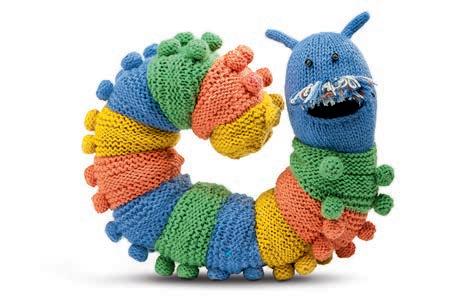



When David Steed was diagnosed with a rare genetic disorder his whole world was turned upside down. Adrenoleukodystrophy is a life limiting condition affecting mainly boys and men that damages the nervous system, with no known cure. And although it has had a considerable impact on his day-today life, David has been determined to live an independent life as possible.
However, David’s mobility rapidly deteriorated and after also battling depression, he sadly had to give up his job in 2020. With no regular income other than his monthly benefit payment, David worried about how he would be able to afford his bills or pay for home improvements in his flat in Paisley, with an aging boiler that urgently needed replacing.
David contacted his local Home Energy Scotland advice centre to see if they could help. He spoke with a friendly advisor over the phone who asked him a few questions about his property and current circumstances. He explained his boiler must be at least 15 years old and was afraid it could break down at any moment.
After chatting through some options, the advisor explained that he might be eligible for funding support from the Scottish Government under the Warmer Homes Scotland scheme and completed an application on his behalf.
Warmer Homes Scotland, funded by the Scottish Government, is designed to help vulnerable people make their homes warmer and more affordable to heat by installing a range of energy saving measures including insulation, efficient heating, and renewable technologies.
Soon after, David was told the good news that his application was successful, and a surveyor would soon arrange to visit his property ahead of the installation. Although some preparatory work would be required, the installation team took care of everything with minimal upheaval to David’s home.
David said: “The support I have received has been absolutely fantastic; I couldn’t fault it. From start to finish, the whole thing took about two months, and the installation was completed in just a couple of days. They kept in touch throughout the process so I knew what would be happening for the duration of the work, which took a lot of the stress out of everything.”
David received a brandnew gas boiler and five new radiators, plus a carbon dioxide detector and new smoke alarms fitted, completely free of charge, and is already enjoying a much cosier home.
“I don’t need to worry about my old boiler packing in now which is a big weight off my mind and I’m paying less for my energy bills now as the new system is much more efficient. I’d definitely recommend getting in touch with the team to see if you could get some help – I’m so glad I did!”
“The support I have receIved has been absolutely fantastIc”
On the back cover of the last issue, we told you: ‘Something HUGE is coming. After two years of working from kitchen tables or borrowed office space, Greater Govanhill has finally found a home.’




We’re absolutely over the moon to have since signed the lease of a premises and can reveal to you that it’s at 82 Bowman Street, just off Victoria Road and opposite the lovely Bees Knees Cafe.

We’re even more excited to tell you that we will be sharing these premises with award-winning investigative journalism co-op, The Ferret. The Ferret’s slogan is: ‘Good journalism changes things’. I have it on a sticker on my laptop, and it’s something I look at and think about often.
Greater Govanhill and The Ferret may take very different approaches and produce different sorts of journalism for different audiences. But we have a shared belief that journalism can make a positive change in the world.
Whether the method is in exposing wrongdoing by those holding the powerful to account or providing a platform to those too-often denied a voice, I really believe that journalism can bring power back to communities.
And this is what we want to achieve with The Community Newsroom.
The theme running through this issue is about how communities find new ways to connect, work together and build a better, more inclusive society.
We want the newsroom to be a space to be used for this important, community-building work. For too long journalism is something that has been done to people, when we really need to be doing it with people to be doing it with people. I believe journalism is important not just for a healthy democracy but also, when done right, as a means of creating connection.
As well as desks for Greater Govanhil and The Ferret team, there will be desks available for others to rent and a meeting room that can be booked out. We’ll have video and podcasting equipment that can be borrowed too.
We’re excited about the all possibilities for what we can do with this space. Ideas range from ‘town hall’ type meetings on local issues, to live illustrations of news stories on the front window. We want it to be a dynamic space used by different people in different ways to connect and talk about the big – and little – issues that affect people in Govanhill. So if you have ideas, we’d love to hear them!
If you are interested in knowing more about the hot desks/meeting room space we have available, or have an idea for an event, email newsroom@greatergovanhill.com.
We mean it when we say we couldn’t have done it without you. We ran an online Crowdfunder for just two weeks in October and were blown away – both by the donations and the messages of support we received. We managed to raise £3500 which will go towards the costs of turning an empty shell of an office into a welcoming, inclusive newsroom.



A massive thank you goes out to everyone last one of the 100 people who donated to support the project, including:
Susan Heywood, Dave Moxham, Oisin Kealy, Izzy Davies, Hannah Graham, Carolyn Sawers, Will Sarbutts, David Baines, Shian Denovan, Saskia McCracken, Patricia Elms, Sharon Stewart, Angela Ireland, Graham Stark, Alex, Gillian Furmage, Simon Cree, Ian Aitken, Greg Soper, Sapna Agarwal, Phoene, Michelle Owen, Alex McCulloch, Zianib, Nisa Ahmad, Bill Breckenridge, Douglas Forsyth, Reece Stafferton, Pat Toms, Jack, Joe Mitchell, Lucas Batt, Laurence Hughes, Samuel Doak, Hellen Camilla Gassner, Victoria Reina, Catrin Evans, Kevin Stanley-Adams, Nina Ludolphi, J Wilson, Owen O'Leary, Nikki Simpson, Amanda, Ross, Kathleen Jenkins, Mary, Anne Milne, Karlene Doherty, Naomi Magnus, Alison Mann, Lorena Levi, Greer Hart, Fatima Uygun, Sue Jarrell, Halla Mohieddeen, Jennifer Gilmour, Ian Davidson, Susie Coughtrie, Alasdair Philips, Kylie Grant, Jessie Martin, Barbara Longo Flint, Beth Murphy, Billy Briggs, Ginny Clark, MJ Brocklebank, Dugald MacGilp, Steve Carter, Clare Harris, Finn W
We’re a wee bit short of our target, so if you missed the Crowdfunder but are in a position to be able to support the project, you still can can by scanning this QR code:
Or become a member of Greater Govanhill from as little as £3 per month to help sustain us on a regular basis: greatergovanhill.com/members

Amina Fundraising Gala
When: 7 Nov, 6:00 pm
Where: Grosvenor Hotel, Grosvenor Terrace
Your Compassion: Our Passion, The Amina Fundraising Gala promises to be an evening of excitement, glamour and giving! It will celebrate and fundraise for the work that Amina do empowering BME and Muslim Women in Scotland. The event is open to adults over the age of 16 and there is a ladies-only seating area and a family section.
When: 8, 15 & 22 November, 10:30am - 12:00pm
Where: Rumpus Room, Langside Lane, 539 Victoria Rd
Stay & Play is a new project to develop a community play space that prioritises experimentation, curiosity, collaboration and care for children aged 0-5 their carers in Govanhill. They have three free play sessions planned to help get the project started with and for a small group of under 5s and their families.
When: 11 - 19 November
Where: The Deep End, 21 Nithsdale St
An exhibition of the first year of Our Rights, Our Communities peer advocacy project, showcasing the stories of strength, connection and integration told by asylum seeking, refugee and migrant women. There will be an opening party on 11 November at 6pm.
White and Givan: Worn
When: 11 November, 7:30 - 8:30pm
Where: Tramway, 25 Albert Drive
Worn is an exquisite and emotive dance production, exploring how the body is affected by time and space, and the experiences, marks and scars that become part of our history and affect our present and our possible futures. Tickets can be purchased on Tramway’s website.
FUTUREPROOF
When: 12 Nov - 23 Jan
Where: Street Level Photoworks
FUTUREPROOF is an annual showcase of new talent in photographic image making, selected from across Scotland’s photography and fine art degree courses. Each year this landmark exhibition reflects the range of approaches and subject matter from recent graduates, celebrating photography as a versatile form of creative expression.
For more regular events and groups, see our noticeboard: greatergovanhill.com/noticeboard
When: 14 November 7:00 - 8:30pm
Where: MILK Café, 452 Victoria Rd
A new in-person book club for the Southside. All of the discussed books will be available from Glasgow libraries. The book for November is Candy by Candice E Fox Carty-Williams. Tickets are £5, but no-one turned away for lack of funds.
When: 16 and 30 November 5:00 - 7:00pm Where: Rumpus Room, 539 Victoria Rd Rumpus Rooms semi-regular workshop is a project celebrating and sharing South Asian intuition working with young people (16-25) of South Asian heritage and their peers to explore heritage as social action led by studio member Ragini Chawla. Participants will be experimenting with creative practices and food to explore other ways to form and transfer knowledge.
We Are Here Scotland: Creators’ Showcase
When: 19 Nov, 10:45am - 4:00pm Where: The Glad Café, 1006A Pollokshaws Rd We Are Here Scotland showcases some of Scotland’s brightest new talents in a Creators’ Showcase alongside a panel, workshop and vegan feast. The panel is titled: How do we make the creative industries a safer and more inclusive place for all? Free but a suggested donation of £5 to refuweegee upon arrival is welcomed.
When: 19 Nov, 2:30 - 8:30pm Where: Kinning Park Complex, 43 Cornwall St Glasgow Zine Library hosts a market fundraiser that will include 20 tables of beautiful handmade wares, hot drinks, baked goods, a raffle and activities for the whole family.
When: 19 Nov, 7:00 - 8:00pm Where: Tramway, 25 Albert Dr Project X Dance presents a series of scratch performances developed by the recipients of their Artist Voice Residency 2022. This residency is part of Project X’s wider activities of championing dance within the African and Caribbean Diaspora in Scotland, as well as platforming Artists of Colour. Tickets can be purchased on Tramway’s website

When: 19 November 12:00 – 5:00pm
Where: The Deep End, 21 Nithsdale Rd
This is Not a Craft Market returns on the third Saturday of the month to play host to a collection of local artists and makers. Along with over 25 fantastic local makers’ stalls, there will be a number of creative workshops, happening throughout the day.

When: 26 November
Where: Silk Road Deli, 34 Minard Rd, G41 2HW

Join Silk Road Deli founder Tanya where they will be whipping up a Kenyan-Gujarati feast, accompanied by their favourite Bollywood tunes. There will be two sittings, a more relaxed one at 6:30pm and an 8:30pm one which will be accompanied by some post-dinner dancing.
Kin
When: 3 December, 7:00 - 10:00pm
Where: Kinning Park Complex, 43 Cornwall St, G41 1BA Kin Kitchen (a volunteer-run community food group) are holding a pop-up meal and raffle to raise money for their community food project.
When: 9 - 23 December
Where: Tramway, 25 Albert Dr
A fun filled festive show for children aged 5+ and their families.
This is the story of a Wolf, a Grandma, and a girl. A girl who likes to be known as Red. A regular girl living in a regular home where she loves to read books about superheroes, adventures and, most of all, Christmas!
But in the town where she lives, Christmas has been banned.
BSL, audio described, captioned and relaxed performances. All information can be found on Tramway’s website.
Times are difficult at the moment for so many. Here’s where you can find essential help:
WHEN: Mon - Sat, 4:30pm - 5:30pm WHERE: 32-38 Dixon Avenue Hot meals and fresh food, pick-up only.
WHEN: Mon - Sat, 9am - 6pm WHERE: 441a Victoria Road Food parcels including frozen home-made meals.
WHEN: Every Sunday at 1:30pm WHERE: The Victoria Road end of Dixon Avenue Free hot vegan meals.

WHEN: Mon, Wed & Fri, 12:30pm - 2pm WHERE: Glasgow Elim Church, 42 Inglefield Street Food parcels to pick-up. Trussell Trust referral voucher needed.
WHEN: Tuesdays 12:30pm - 2:30pm and Thursdays 5pm - 8pm WHERE: 43 Cornwall Street A three-course, pay-what-you-can, community meal at Kinning Park Complex. No need to book, bring your family, bring your pals! Vegan, halal and gluten free available.
WHEN: Weekdays
WHERE: 488 Cathcart Road
Membership costs £3.50, and entitles members to do a weekly shop for £2.50. Check the website to download a membership application form: govanhillbaths.com/ pantry. They also do a soup kitchen the last Sunday of every month from 1-2pm.
WHEN: Saturday to Wednesday 4pm - 10pm WHERE: 451 Victoria Road Pay-what-you-can sit in cafe and takeaway. They also have a fridge sometimes containing free food outside the premises.
WHEN: Thursdays, 10am - 12pm WHERE: Queen’s Park Parish Church Provide food supplies for three days.
WHEN: Monday 10:30am - 12:00pm WHERE: Glasgow Autonomous Space, 53 Kilbirnie St. Unity World Cafe currently distributes free food to destitute asylum seekers.
To the sons of Ghulam Muhammad you came here with nothing and held tight to brotherhood. You were immigrants from another country and a name you made for yourselves. You couldn’t speak the language but you learnt it through conversations. There were sacrifices and everyday struggles, but you braved those challenges together. You saw greatness in your abilities and brought equality to the streets. You developed fellowship between people and those people still remember your names.




